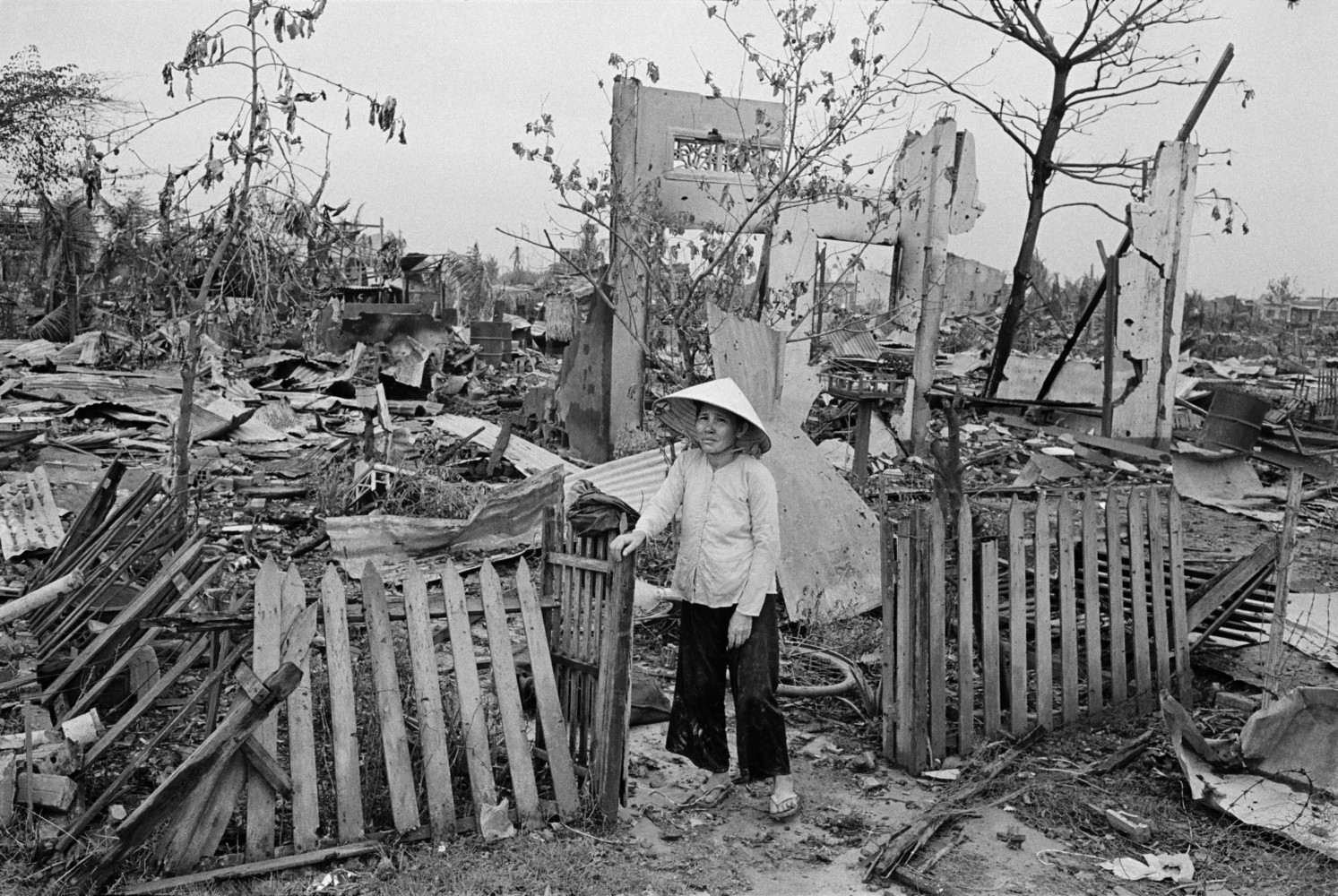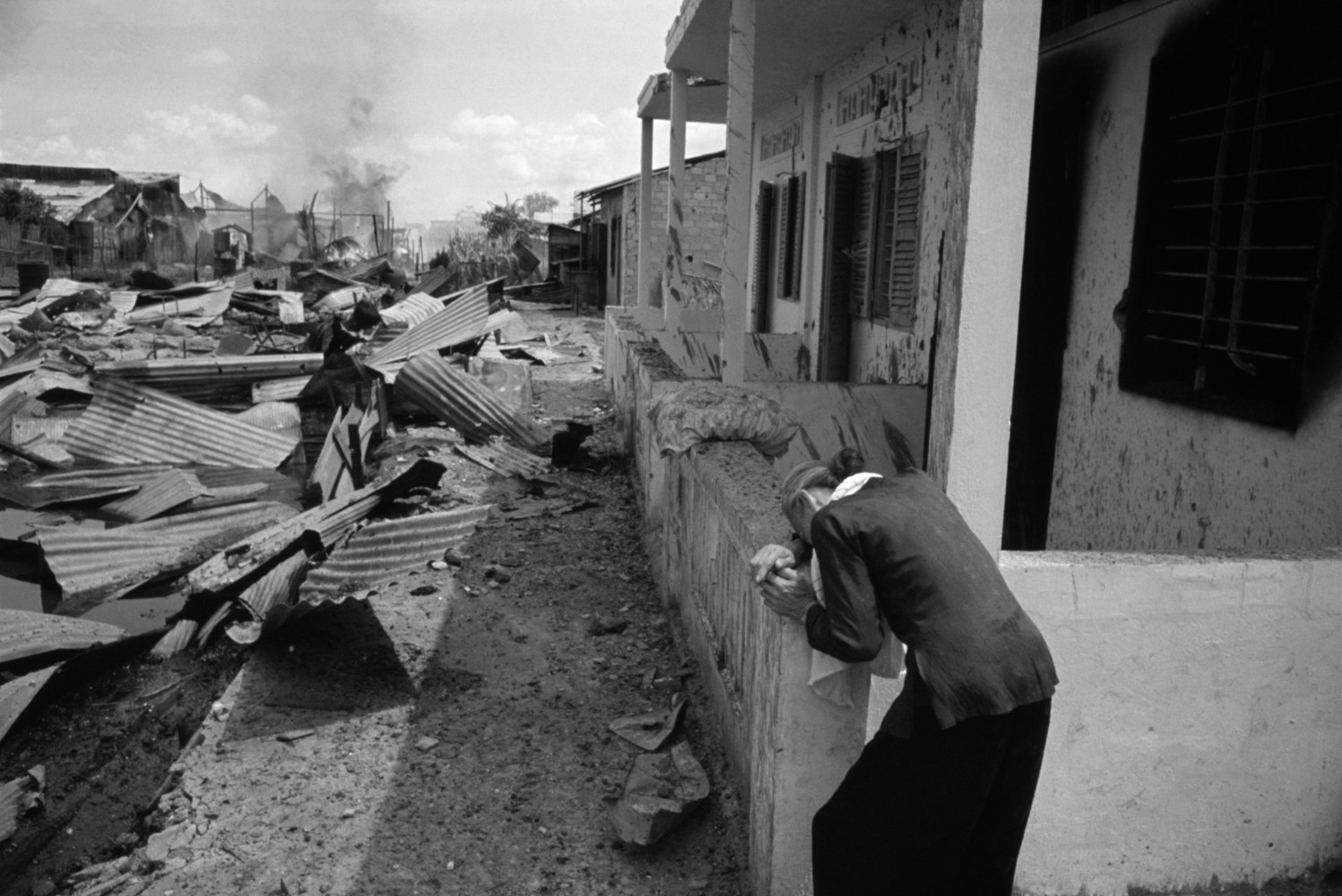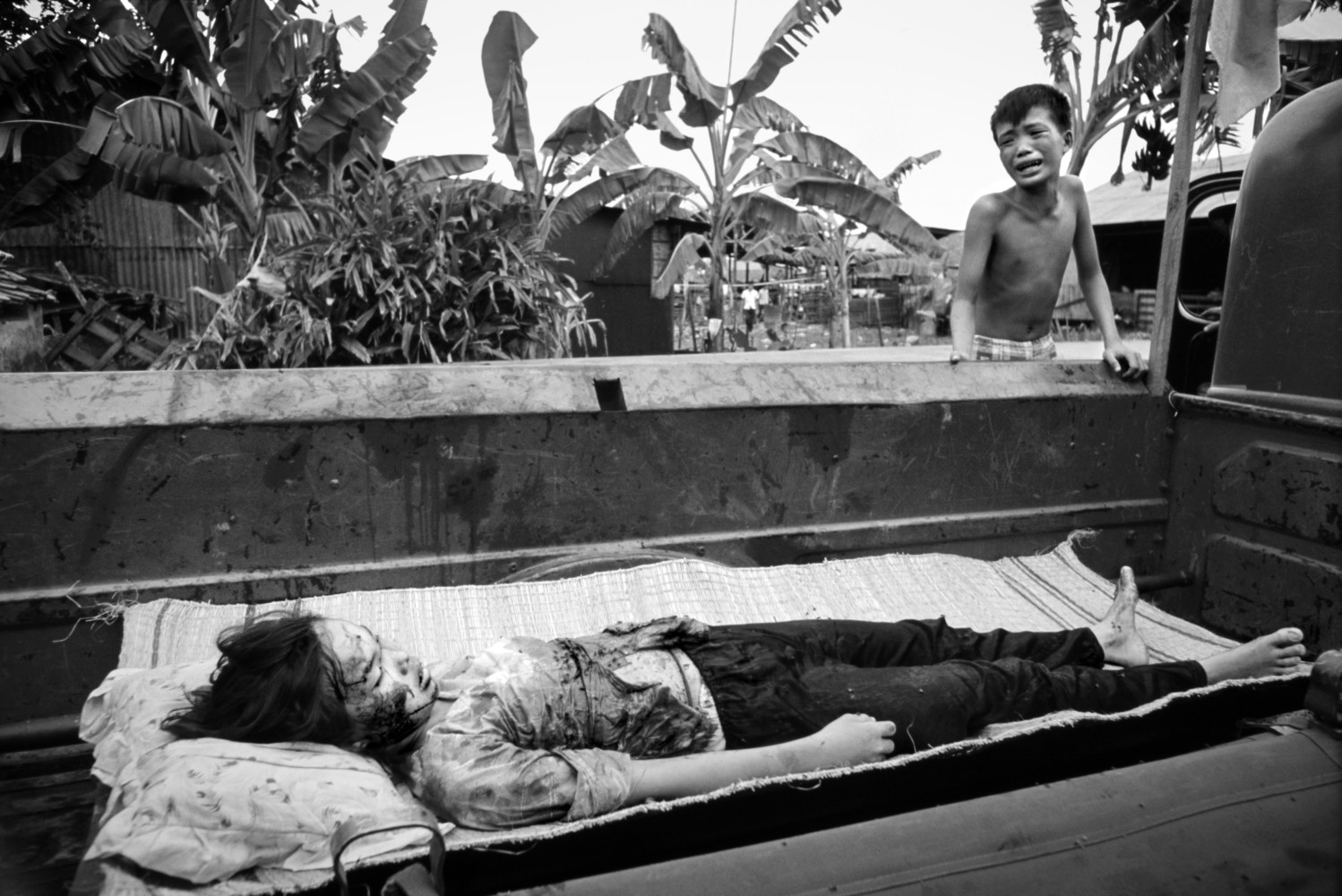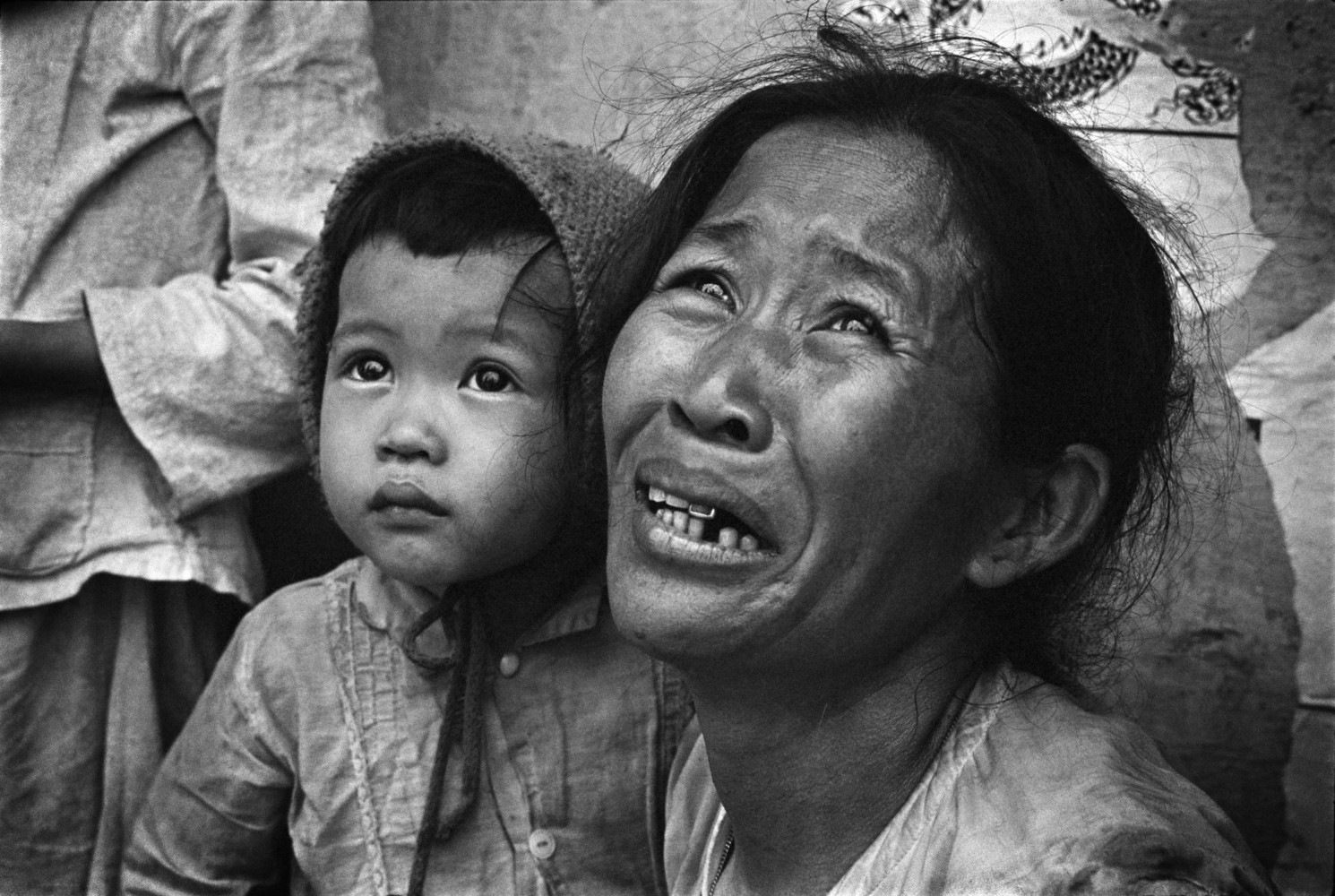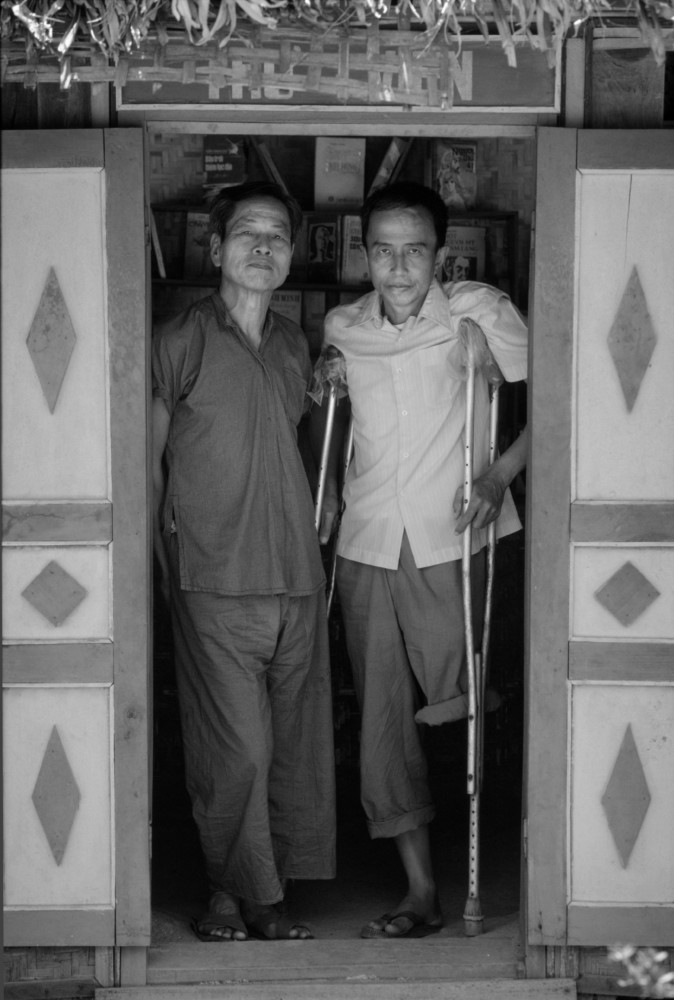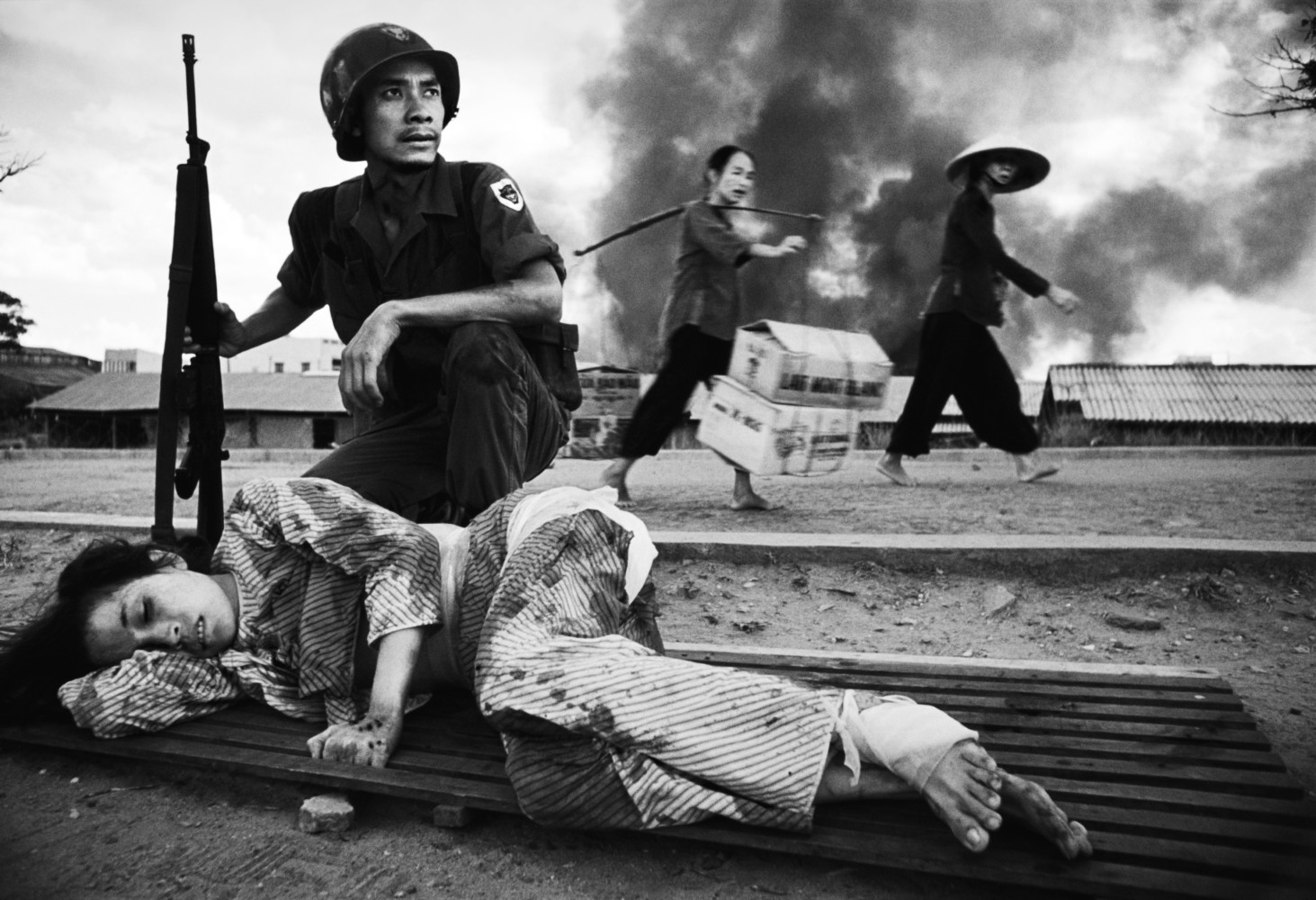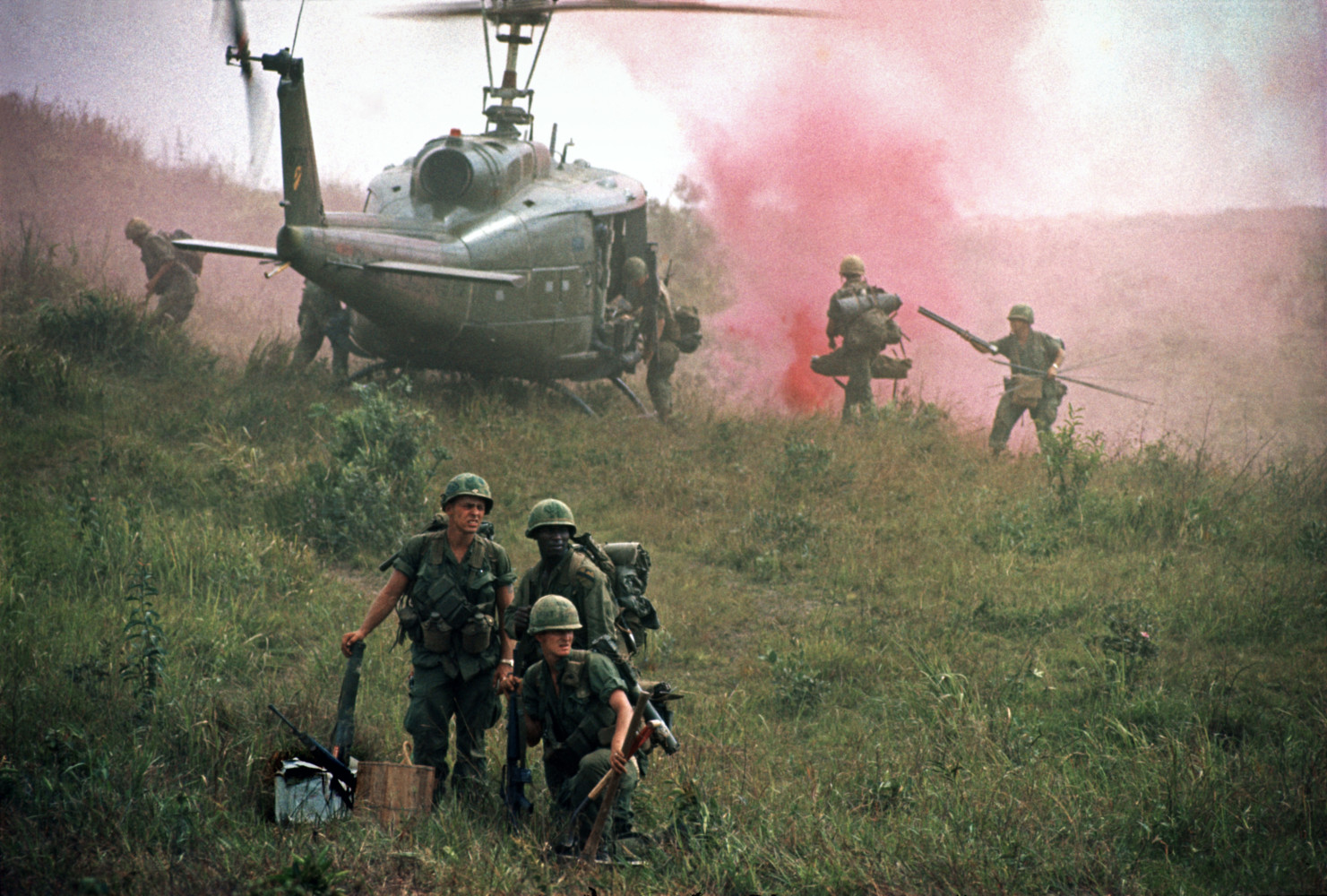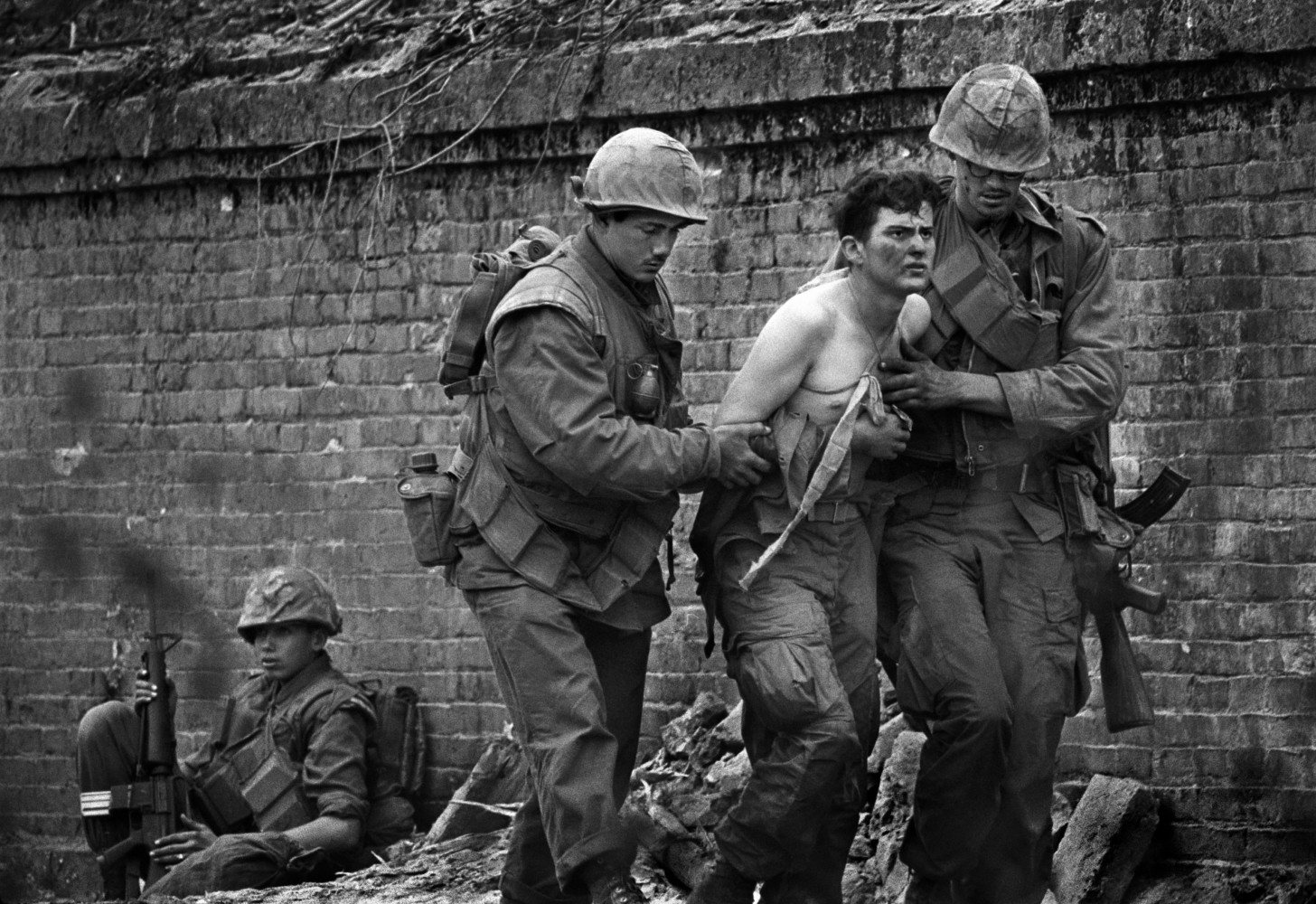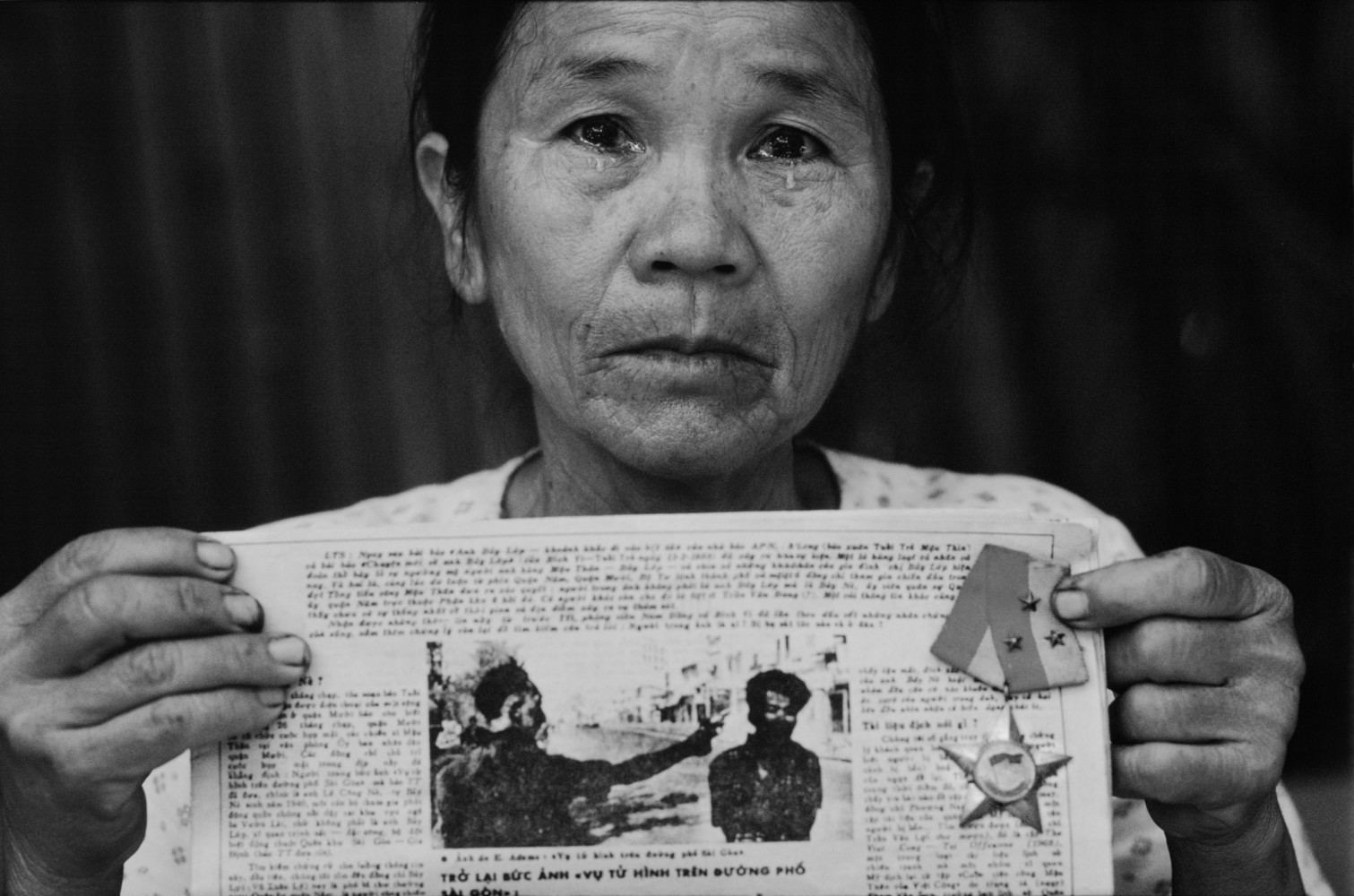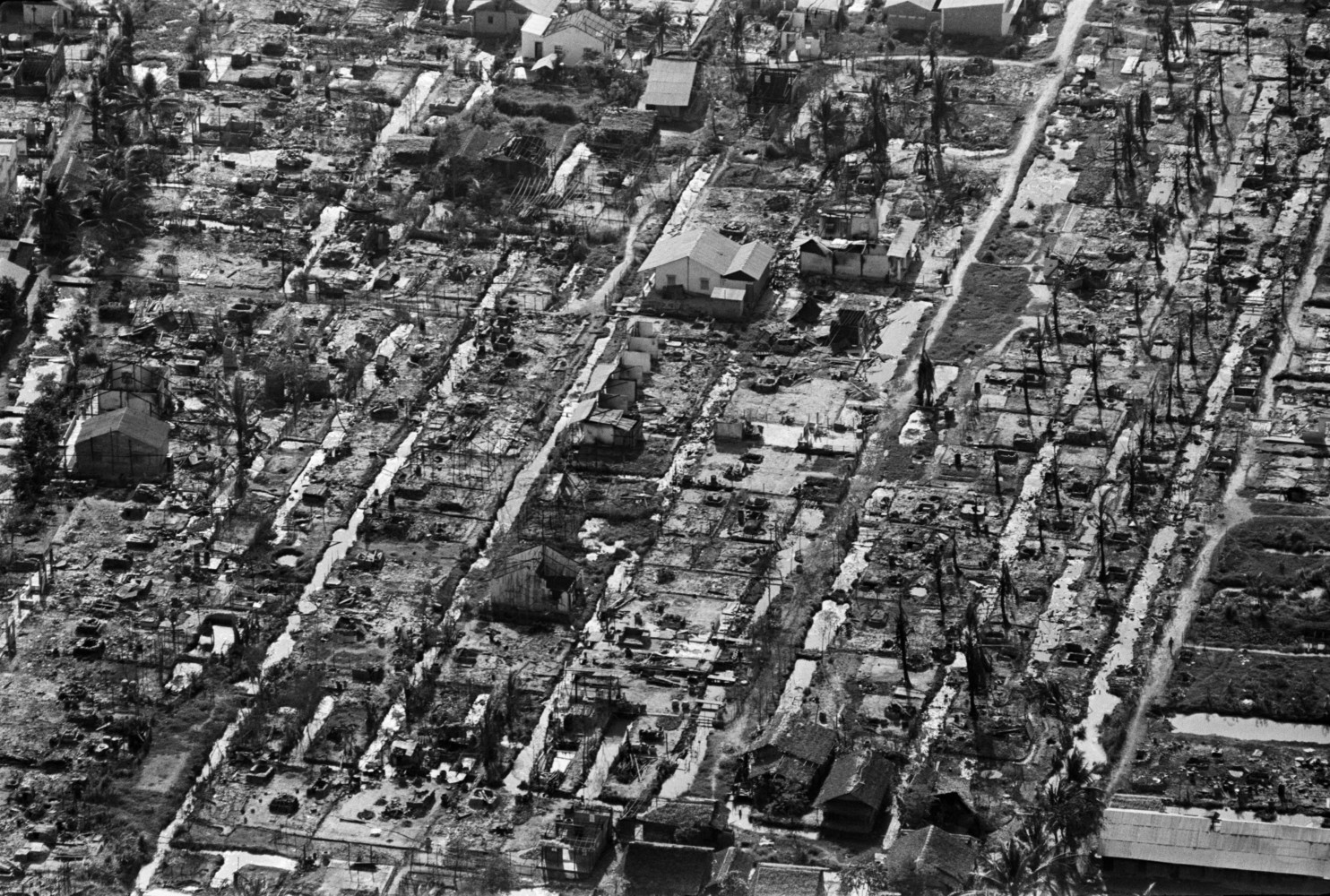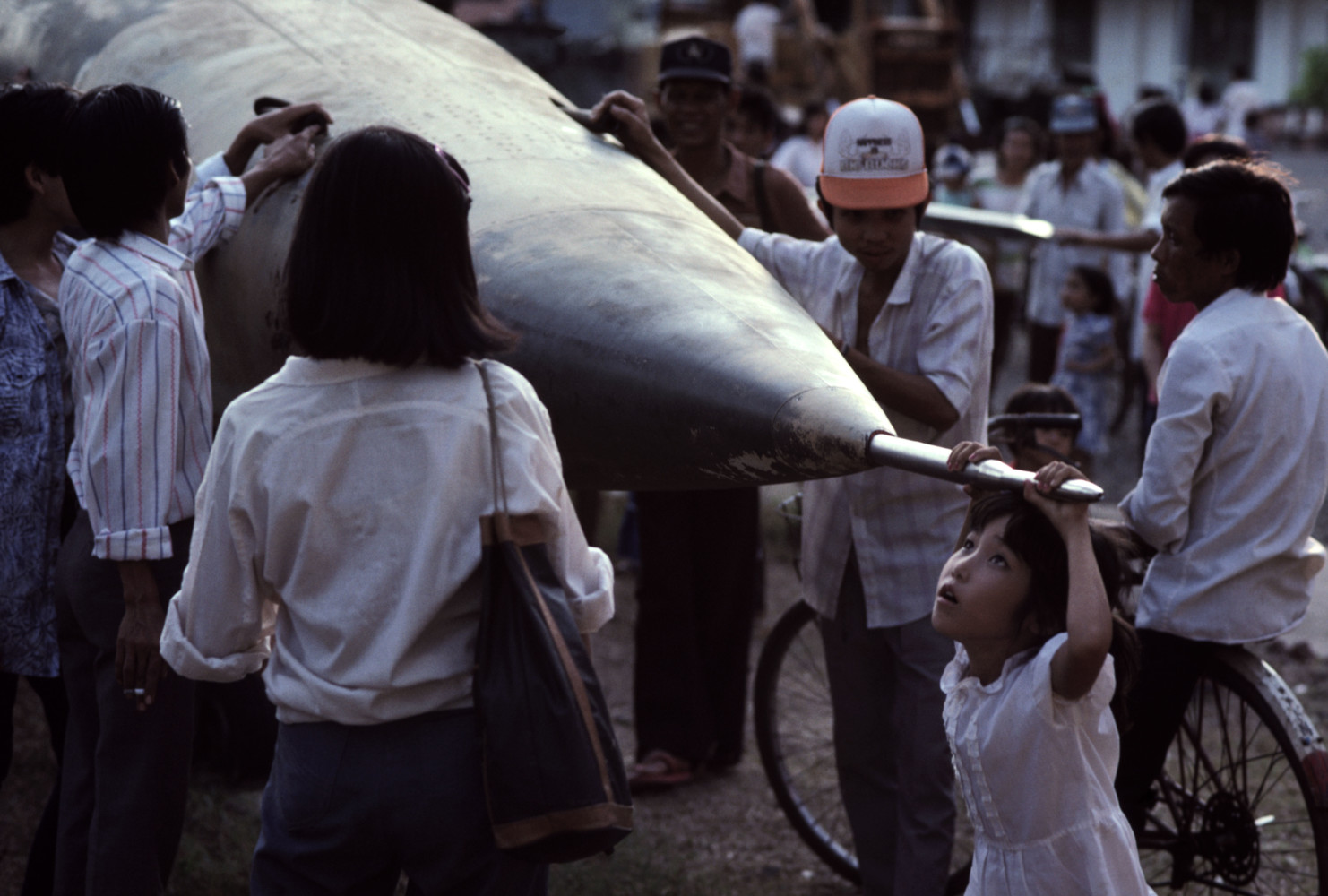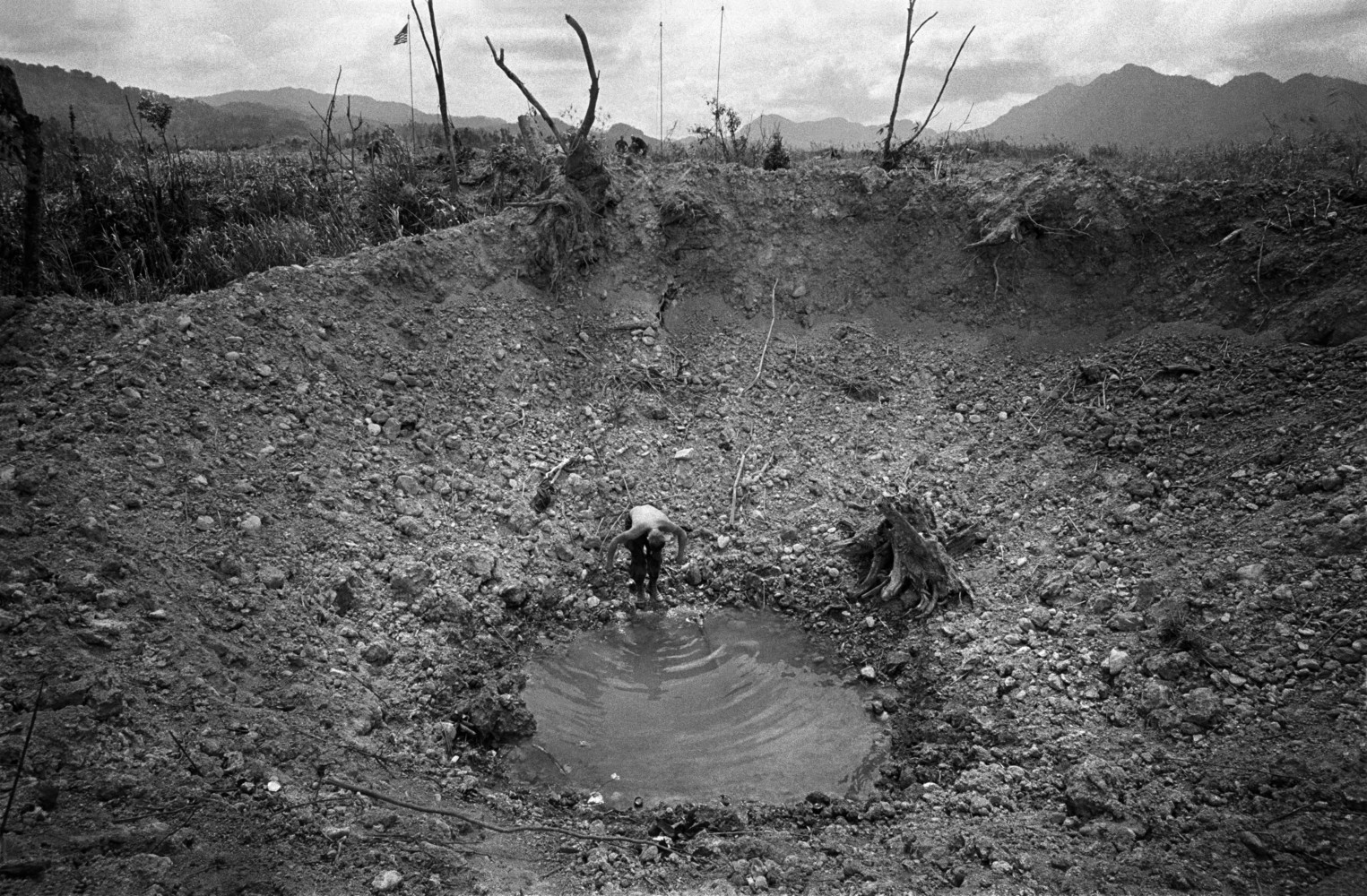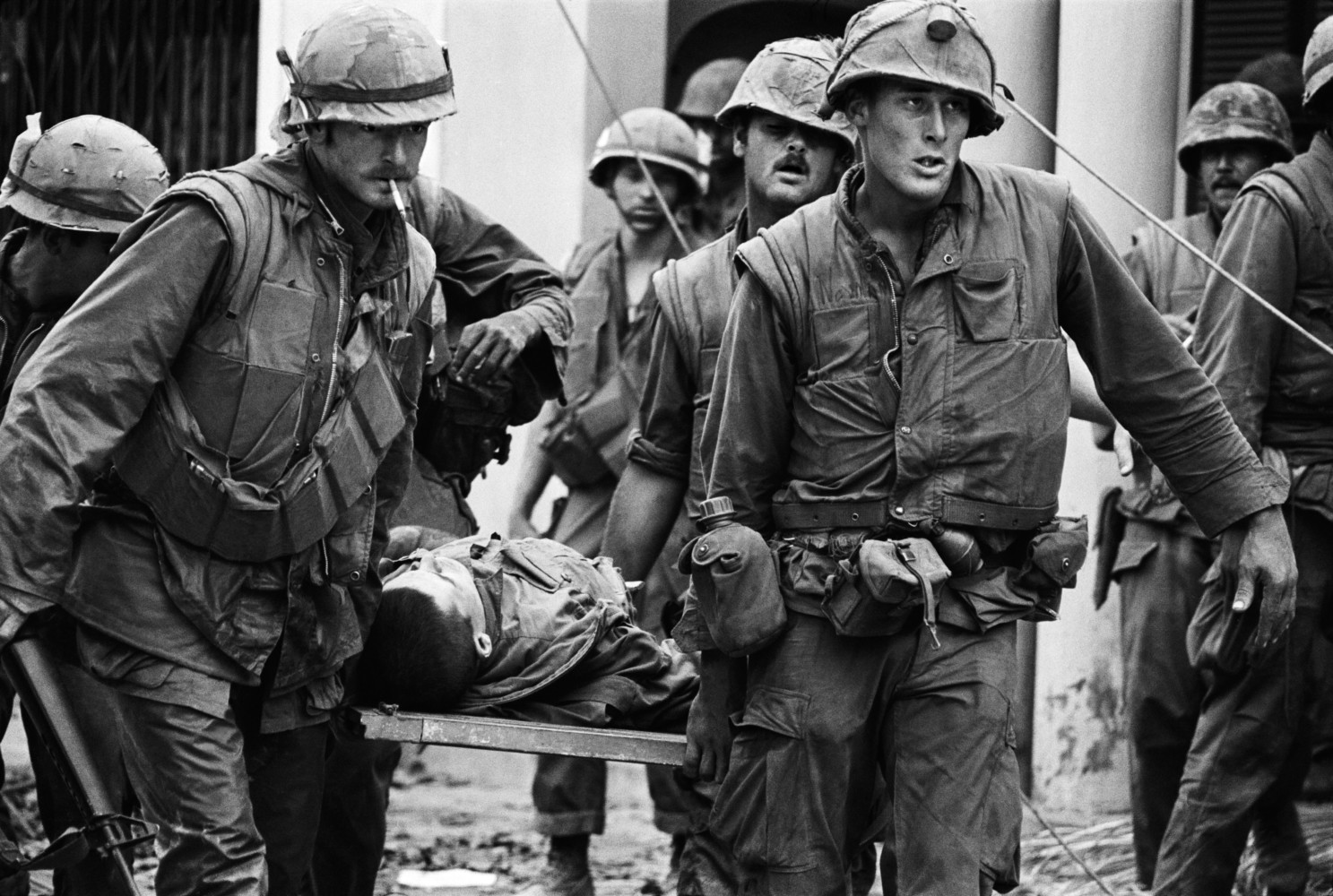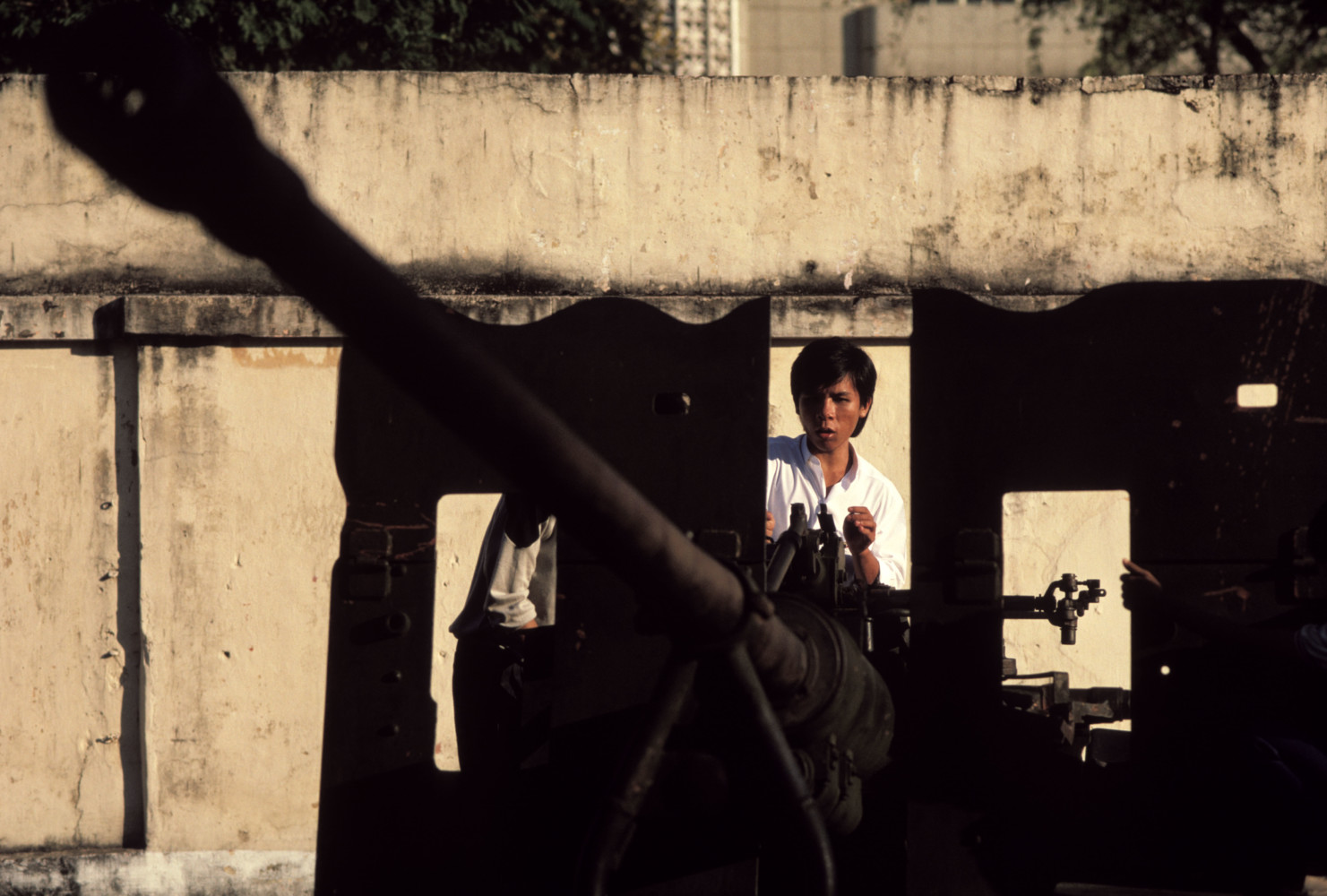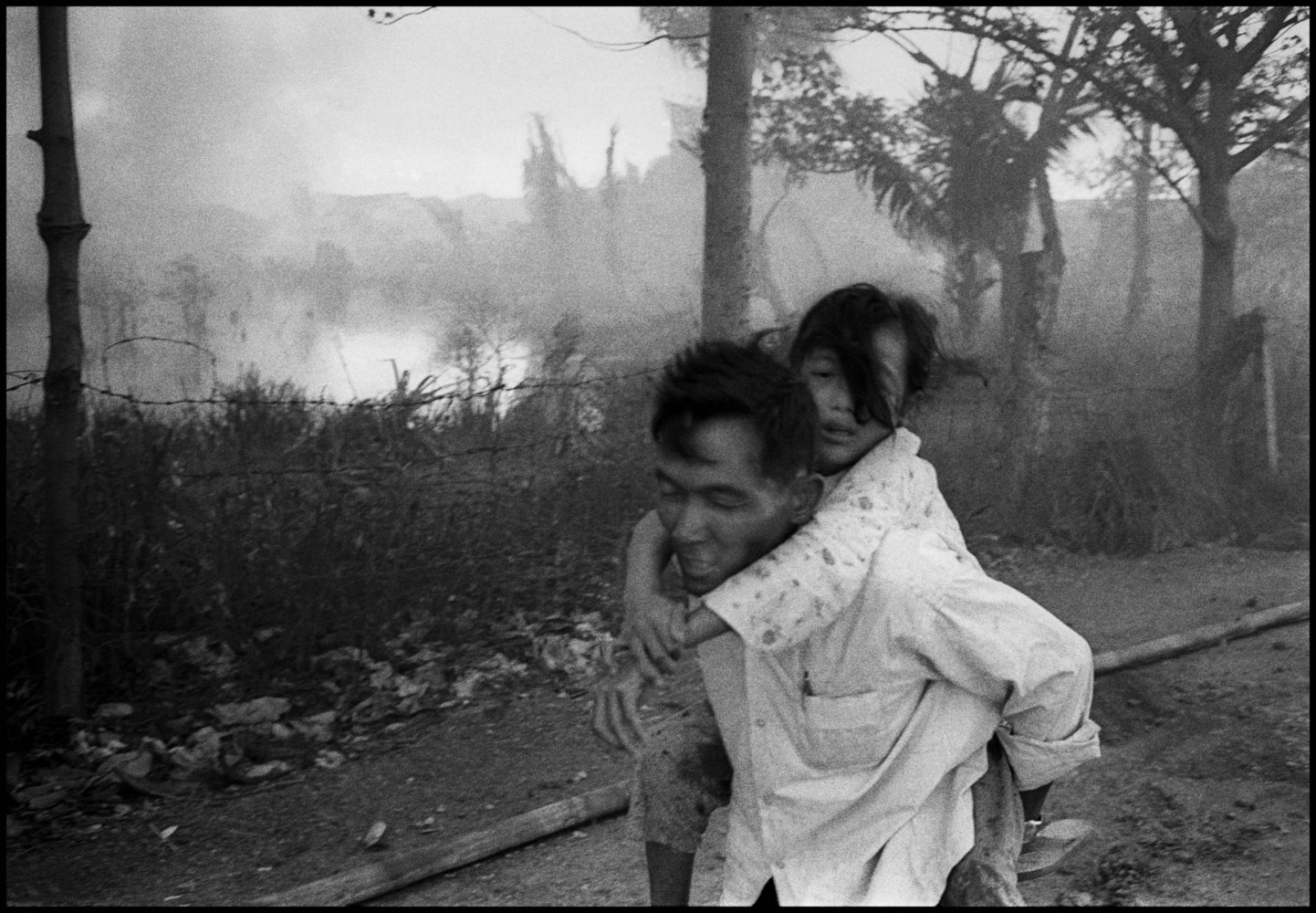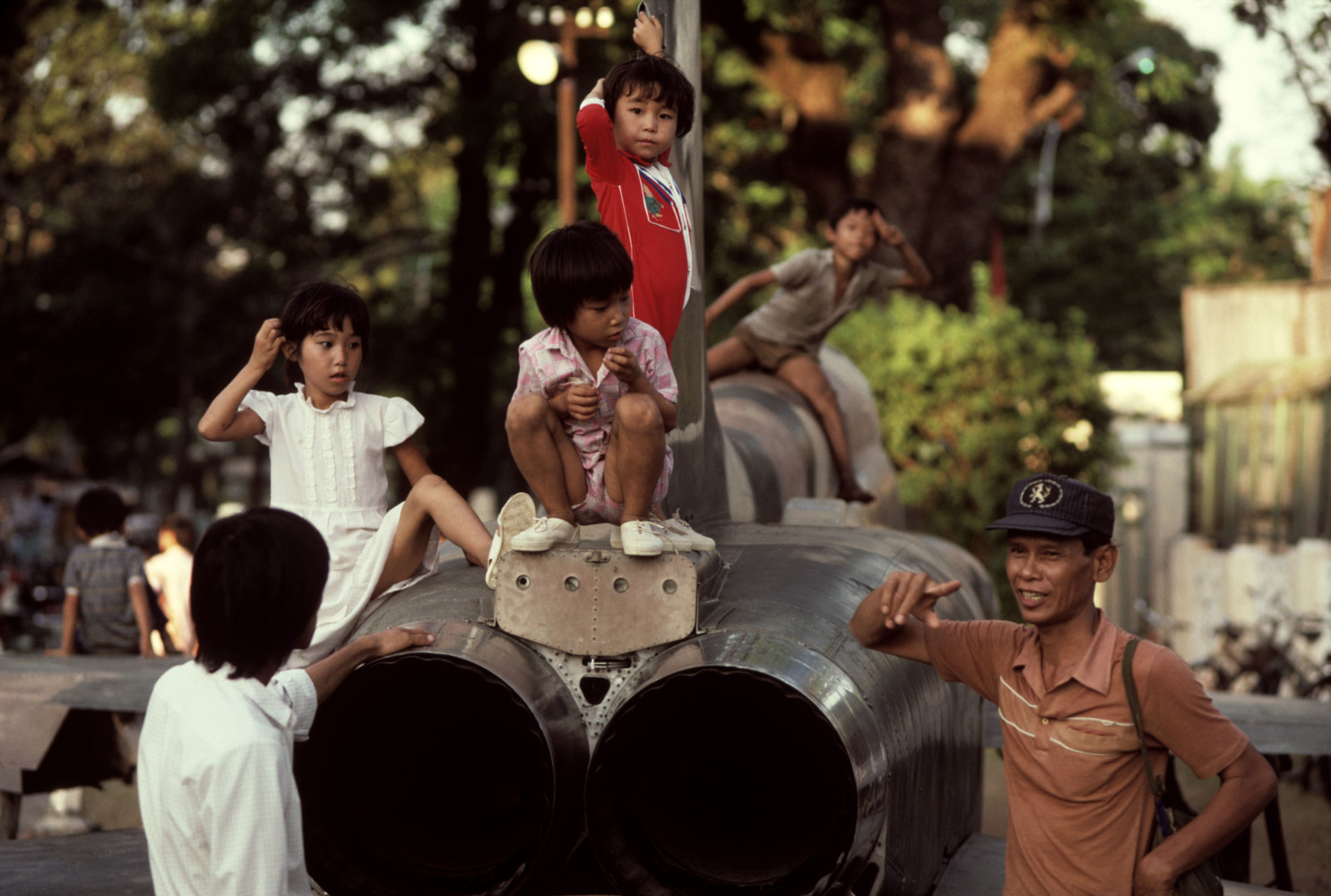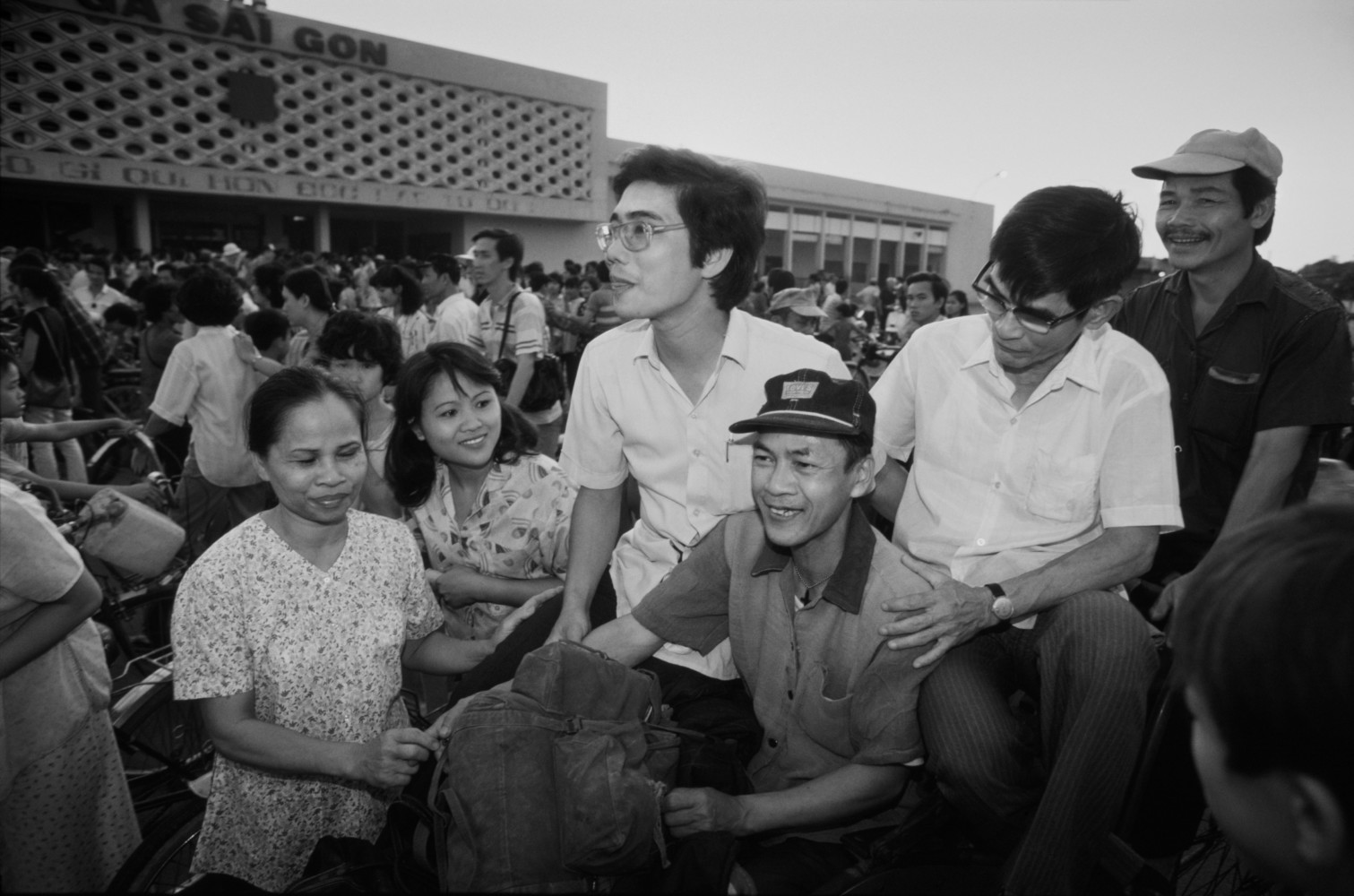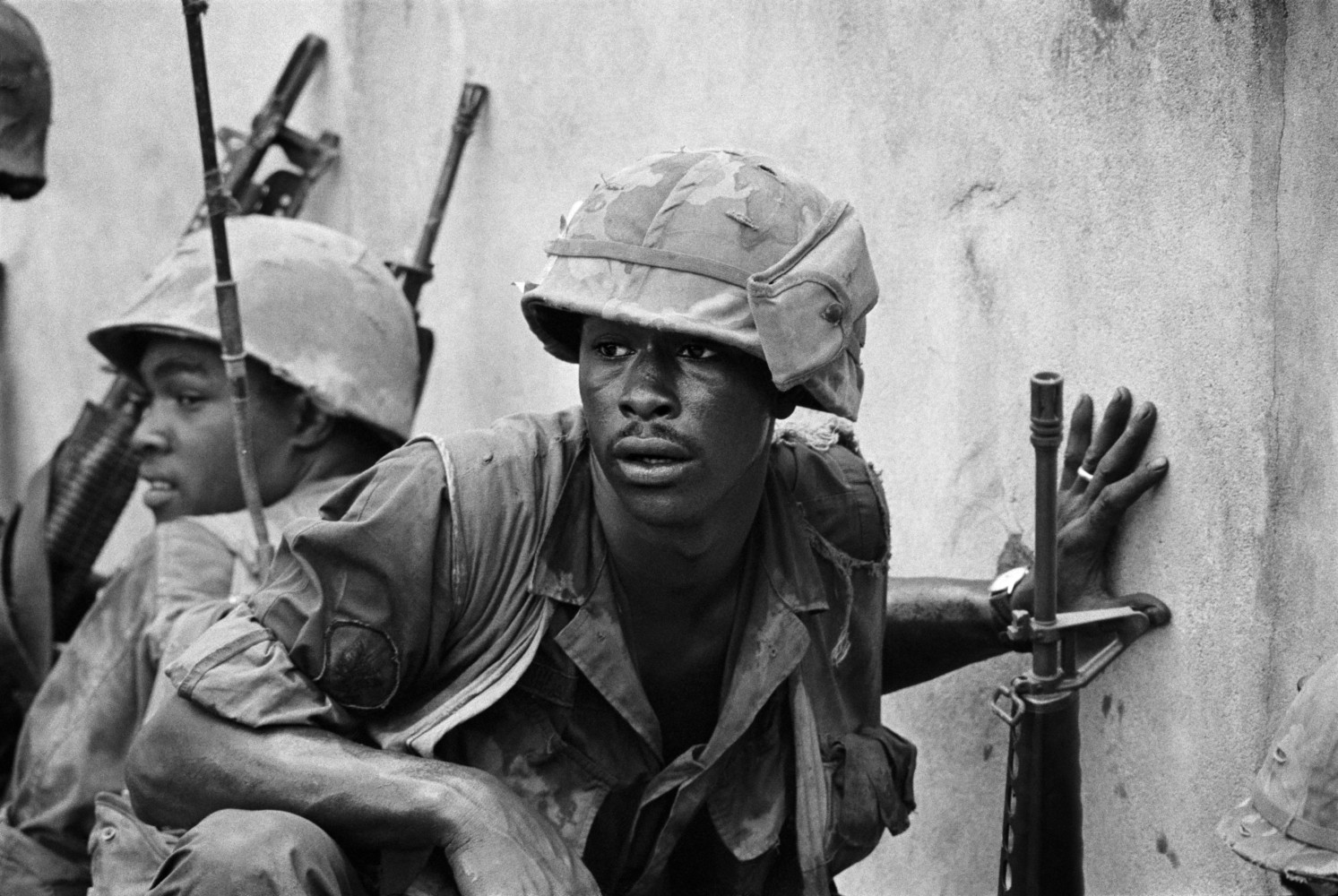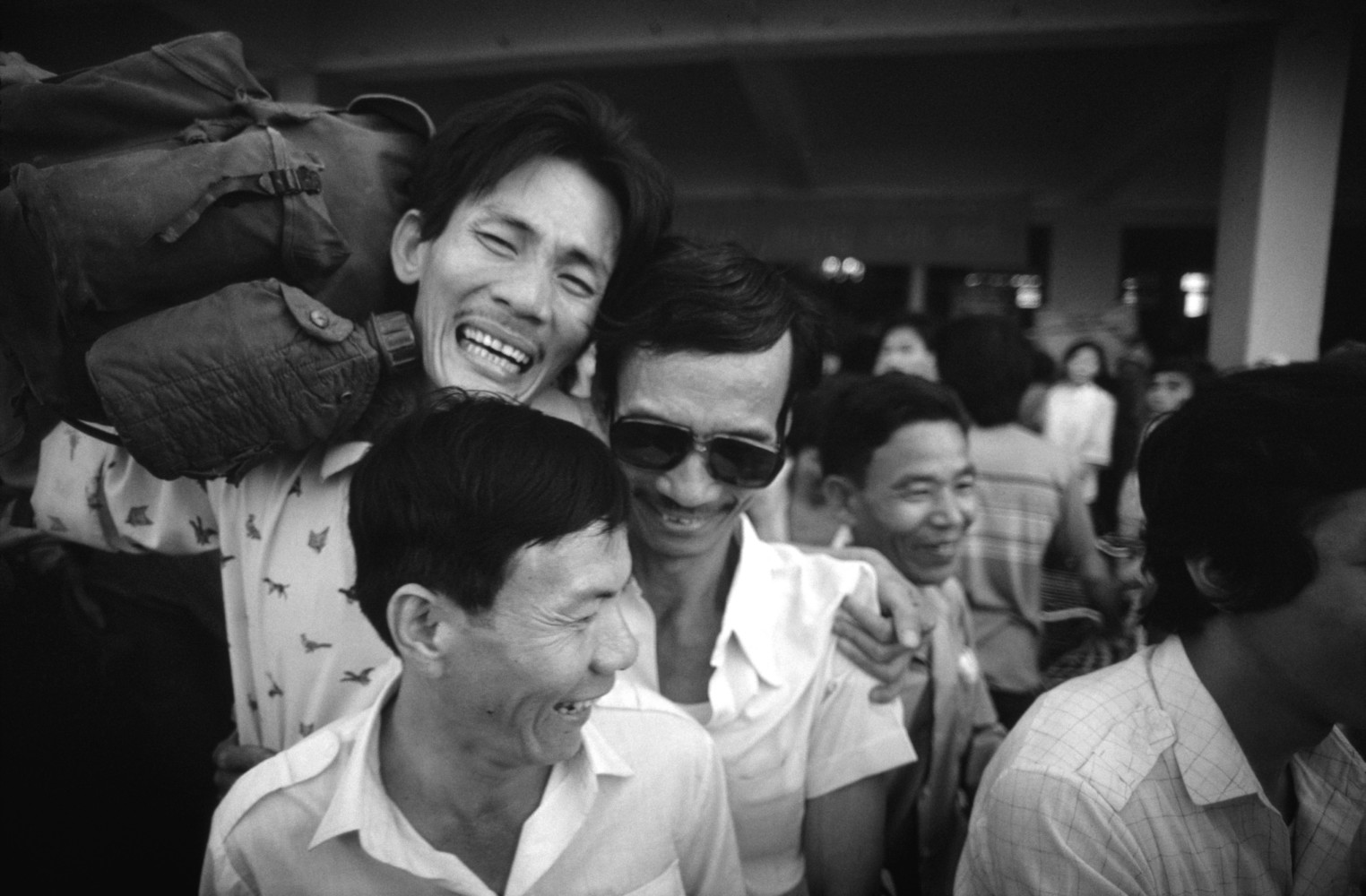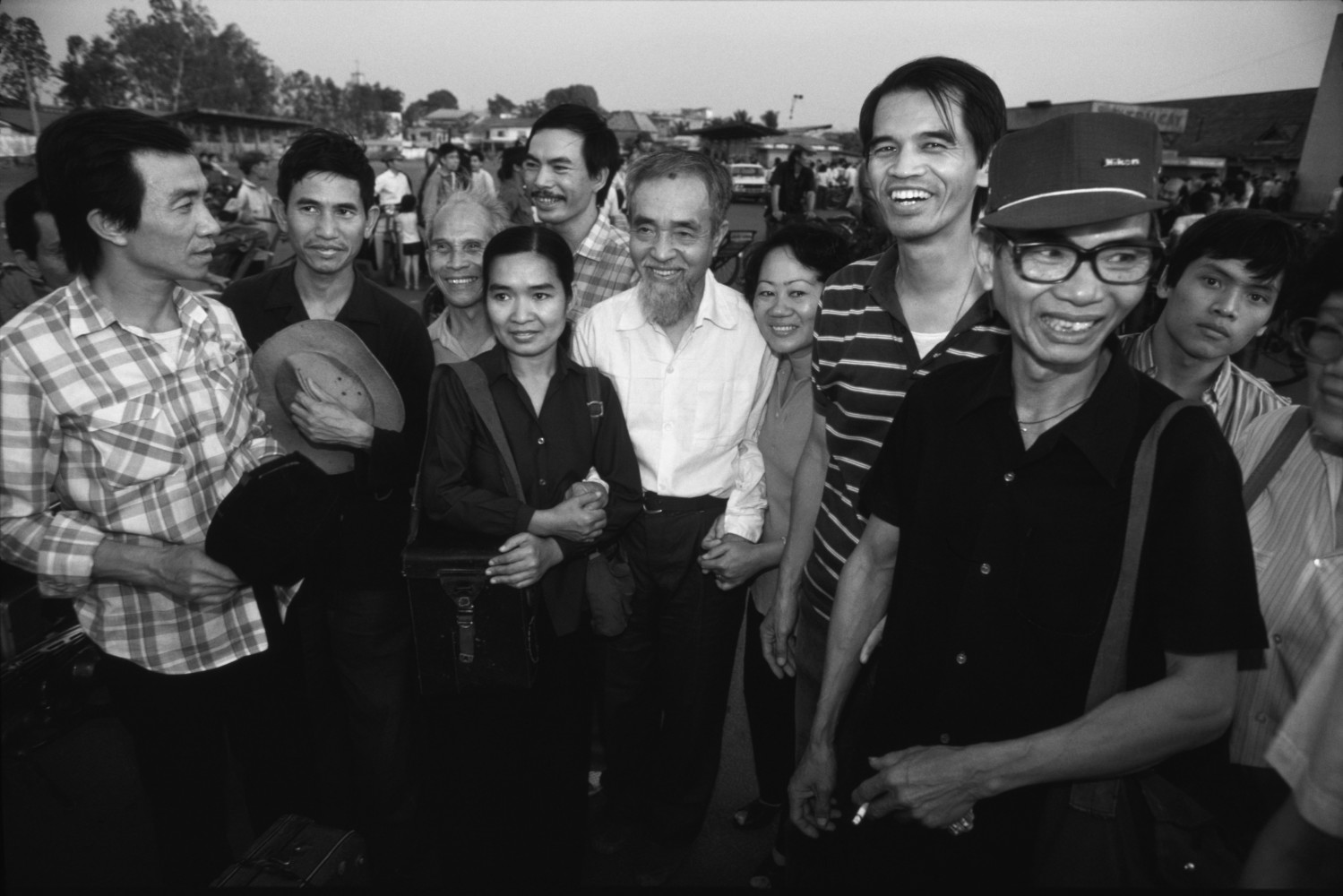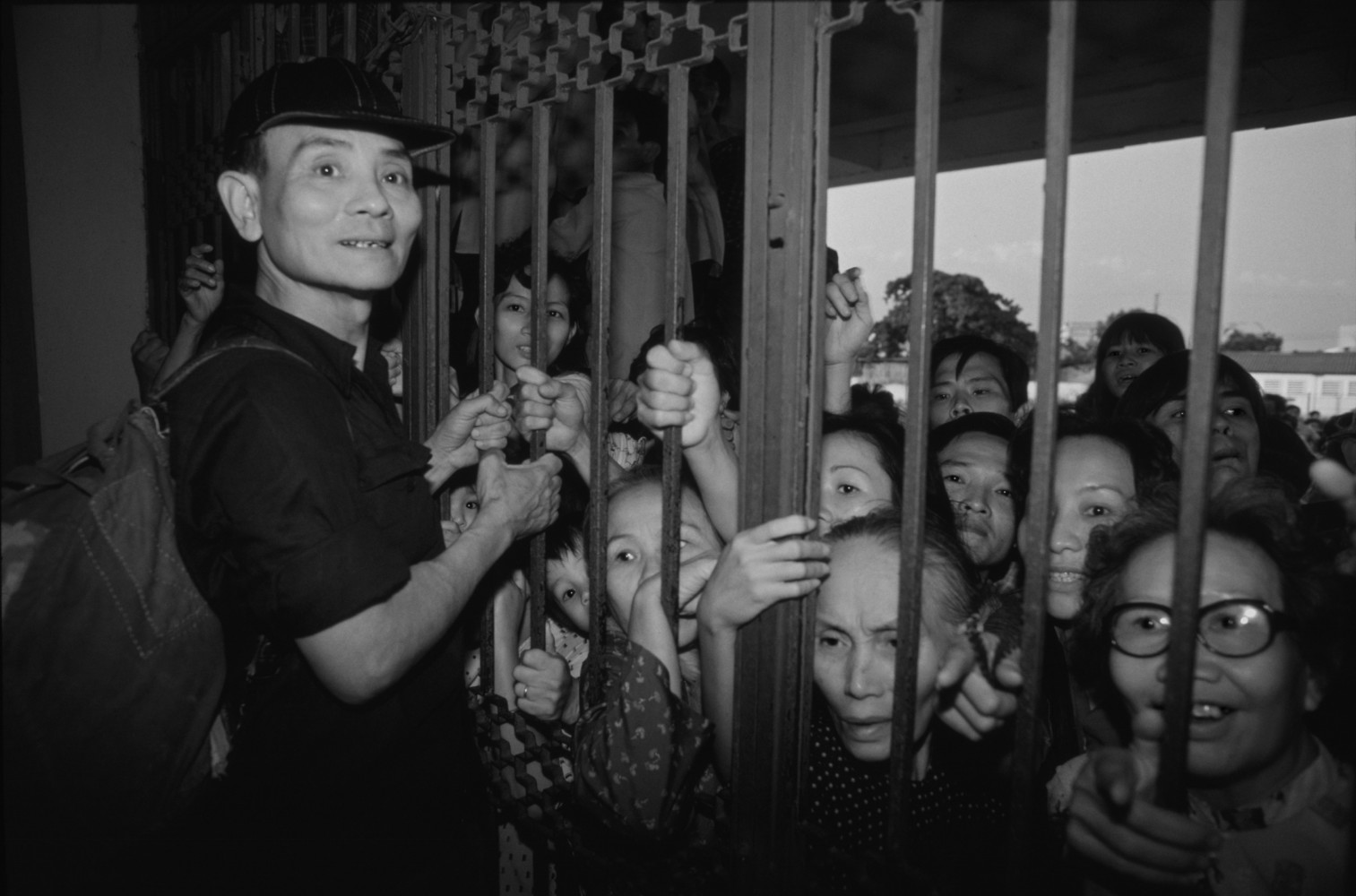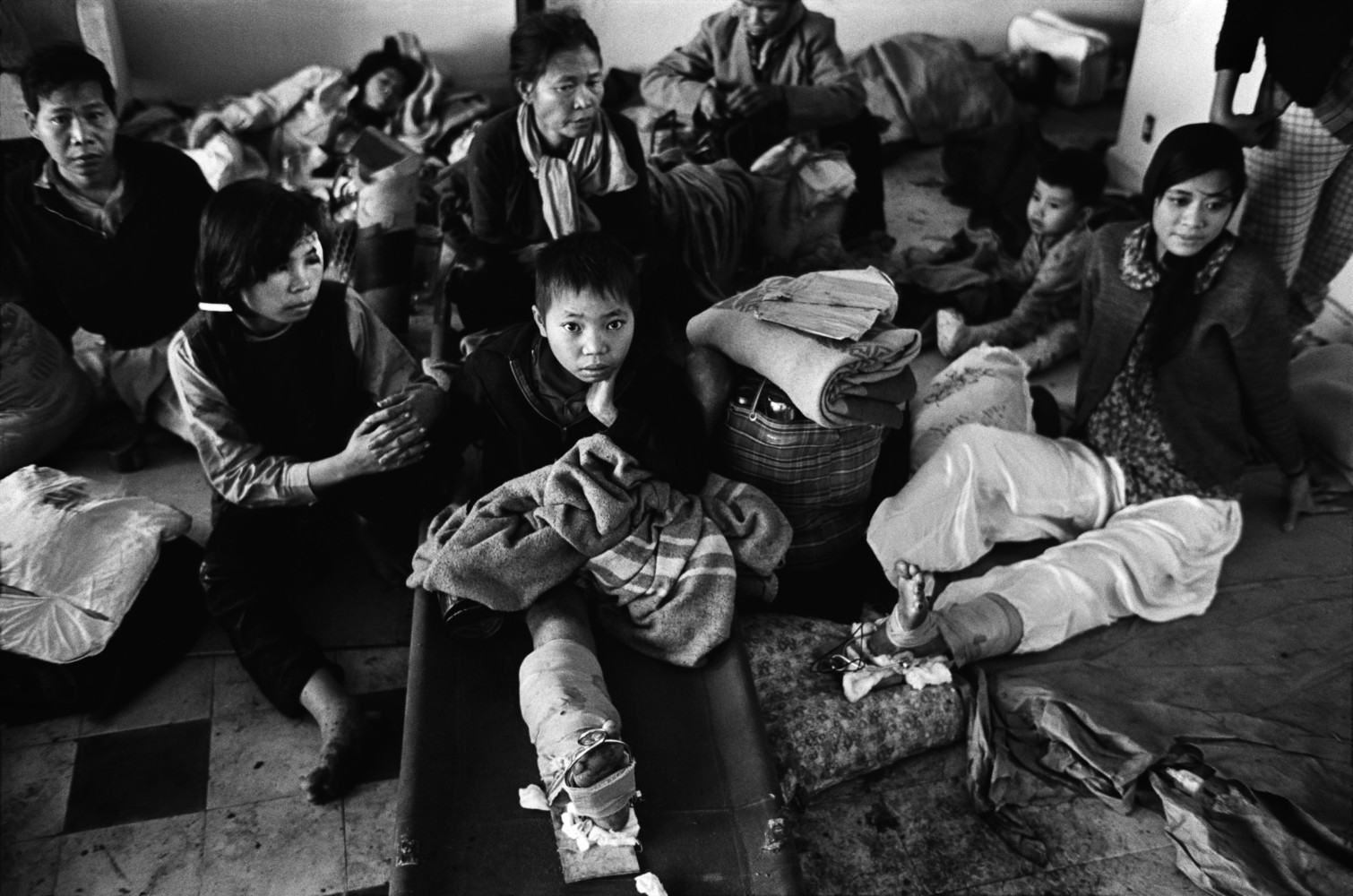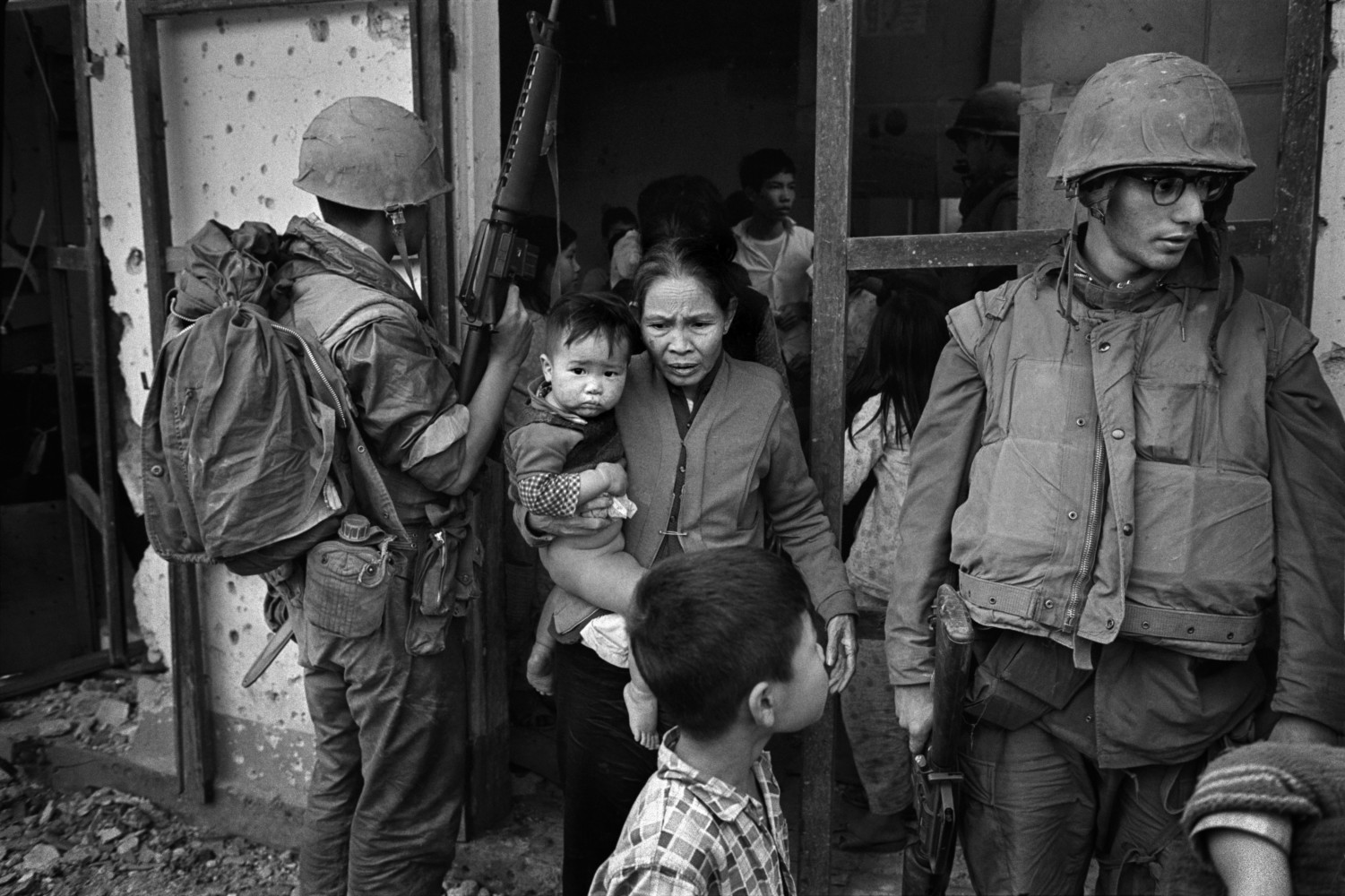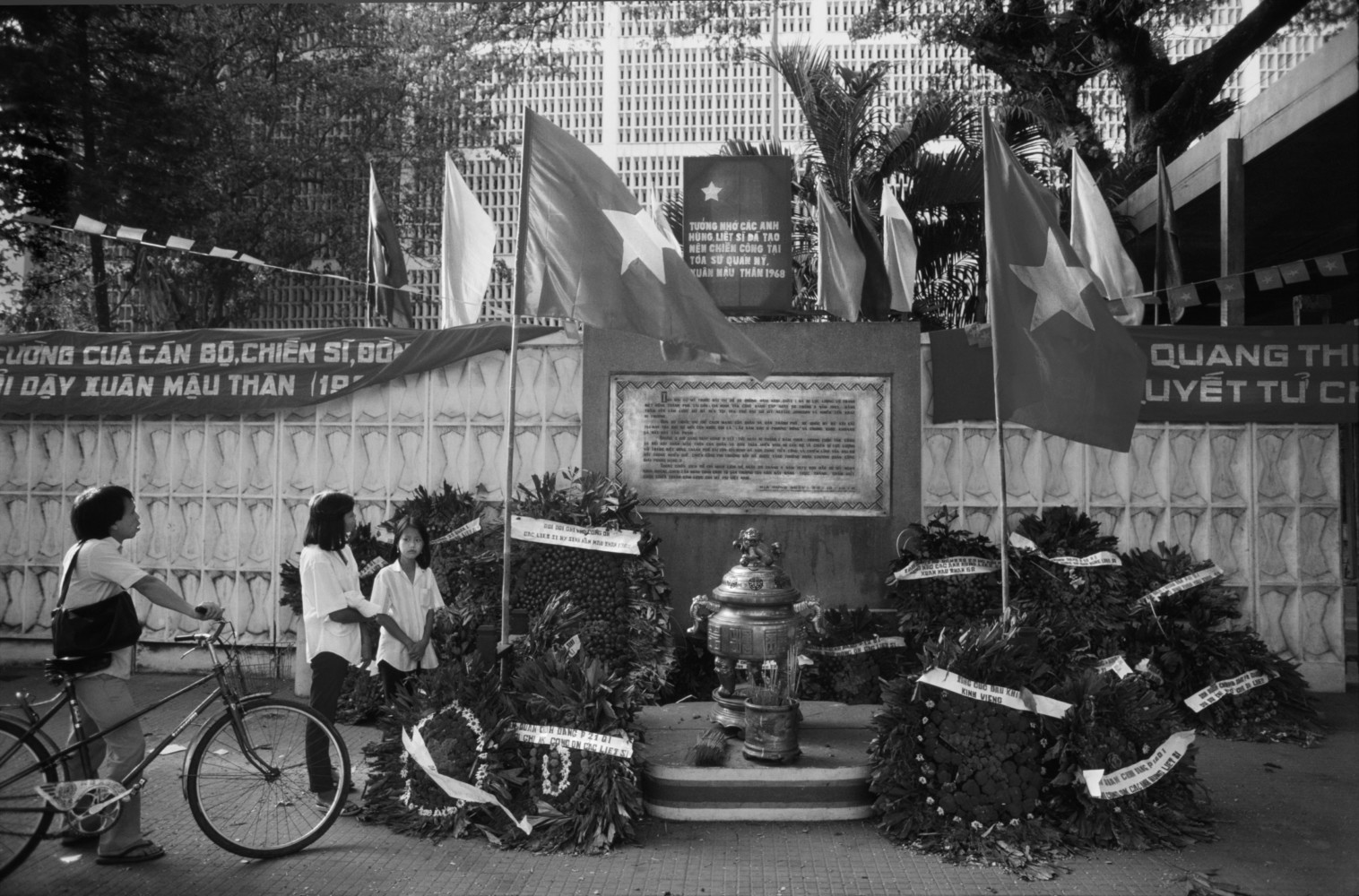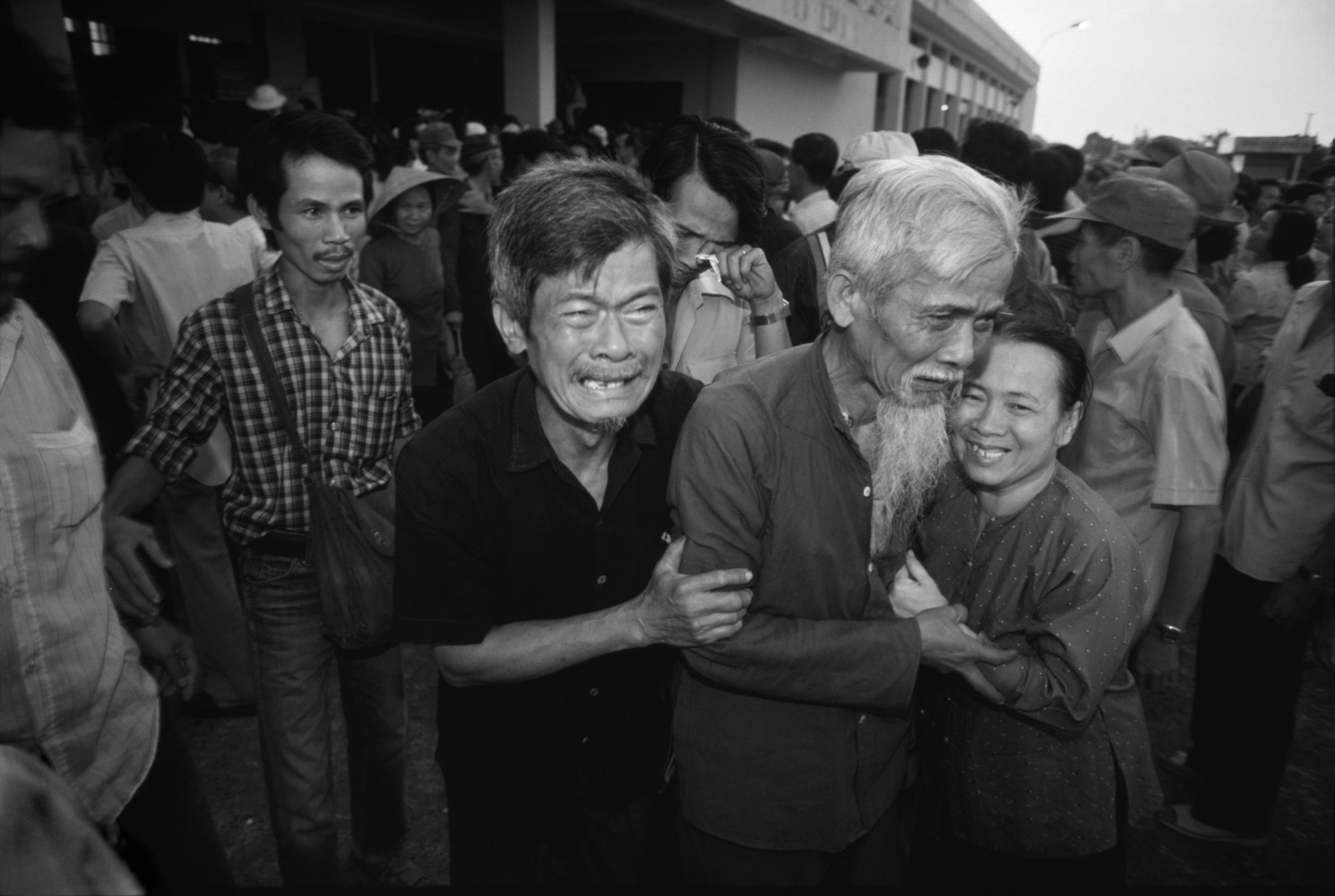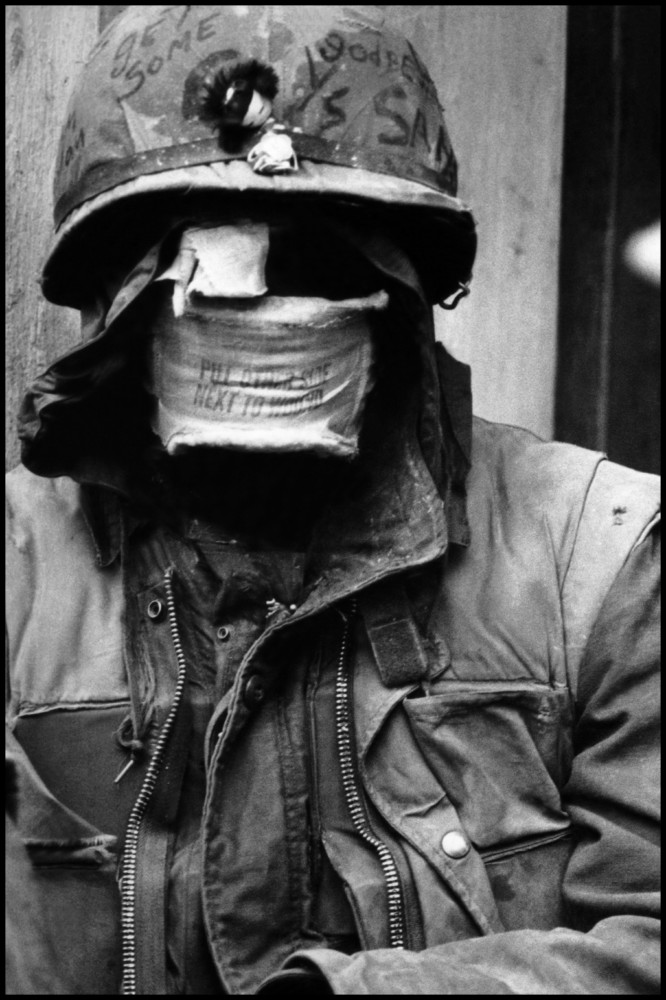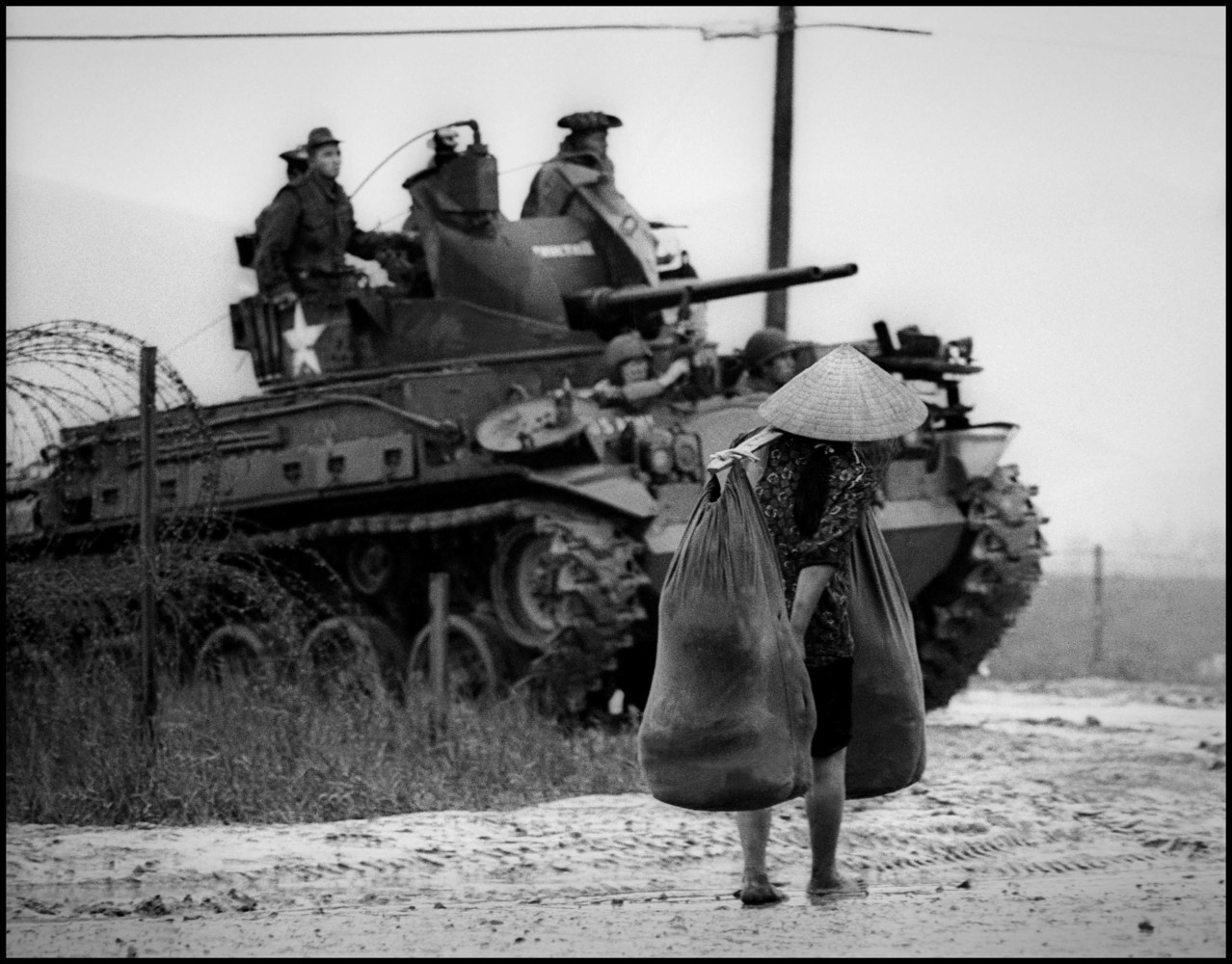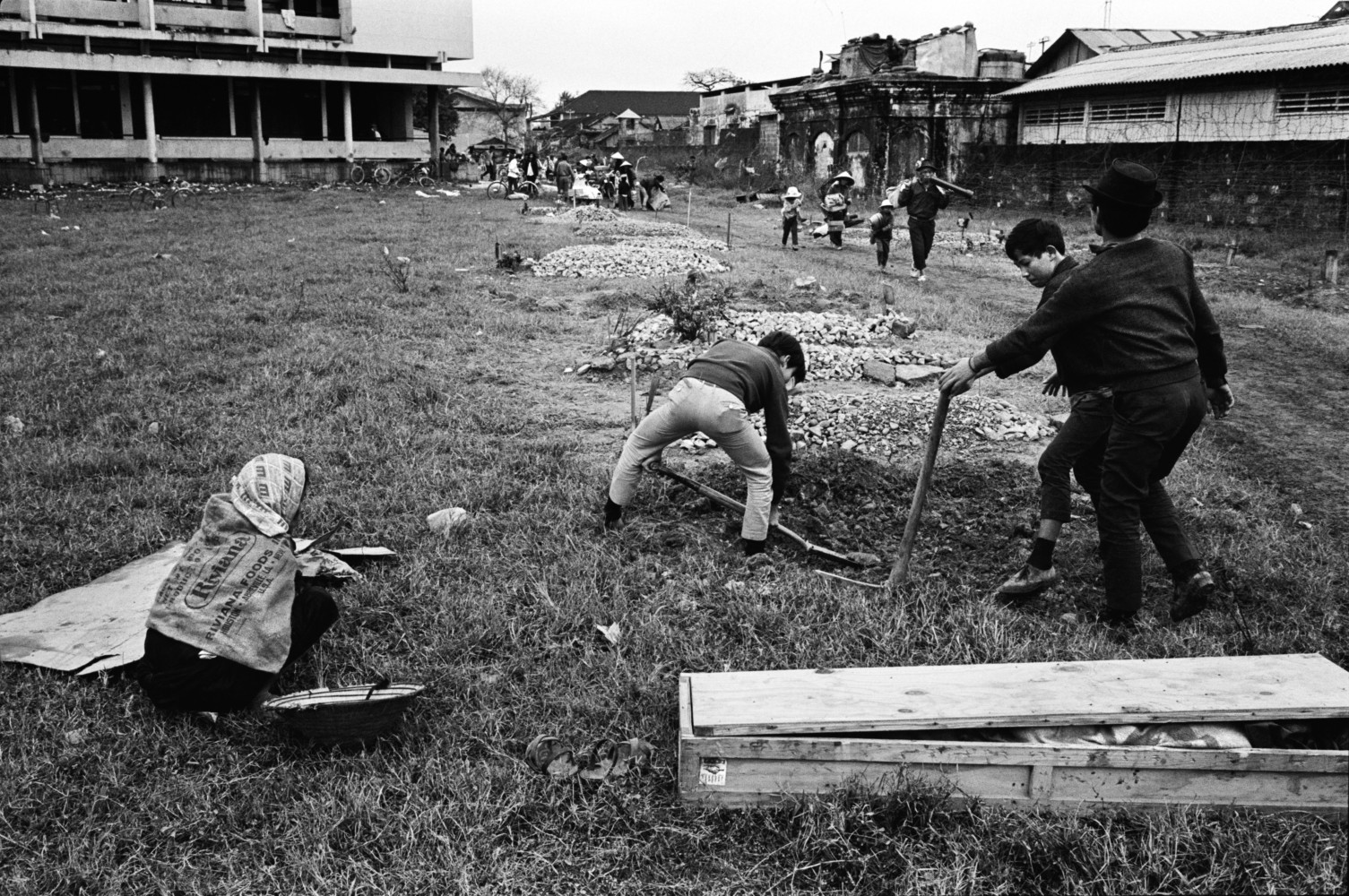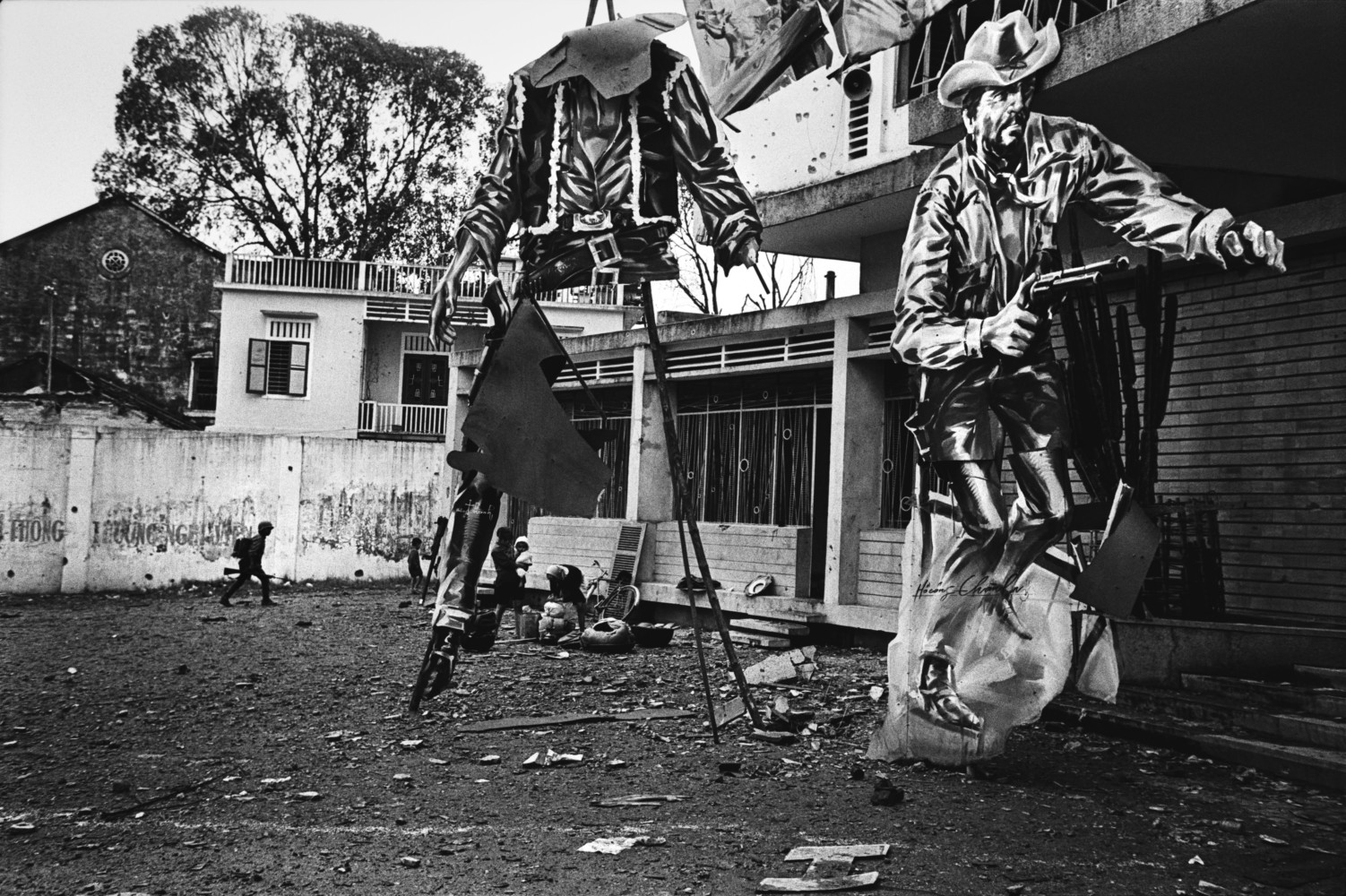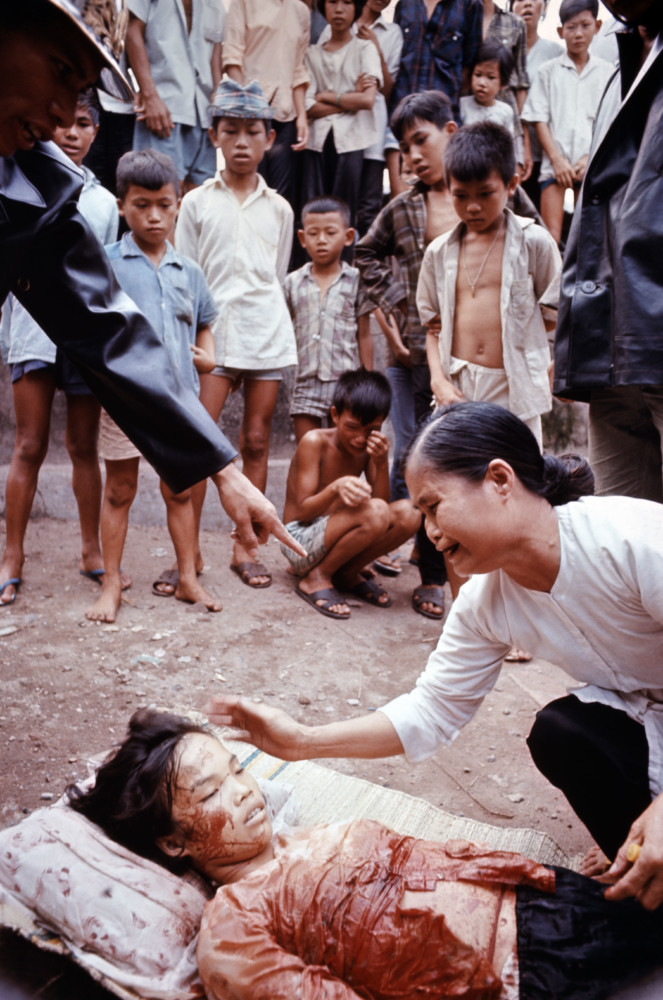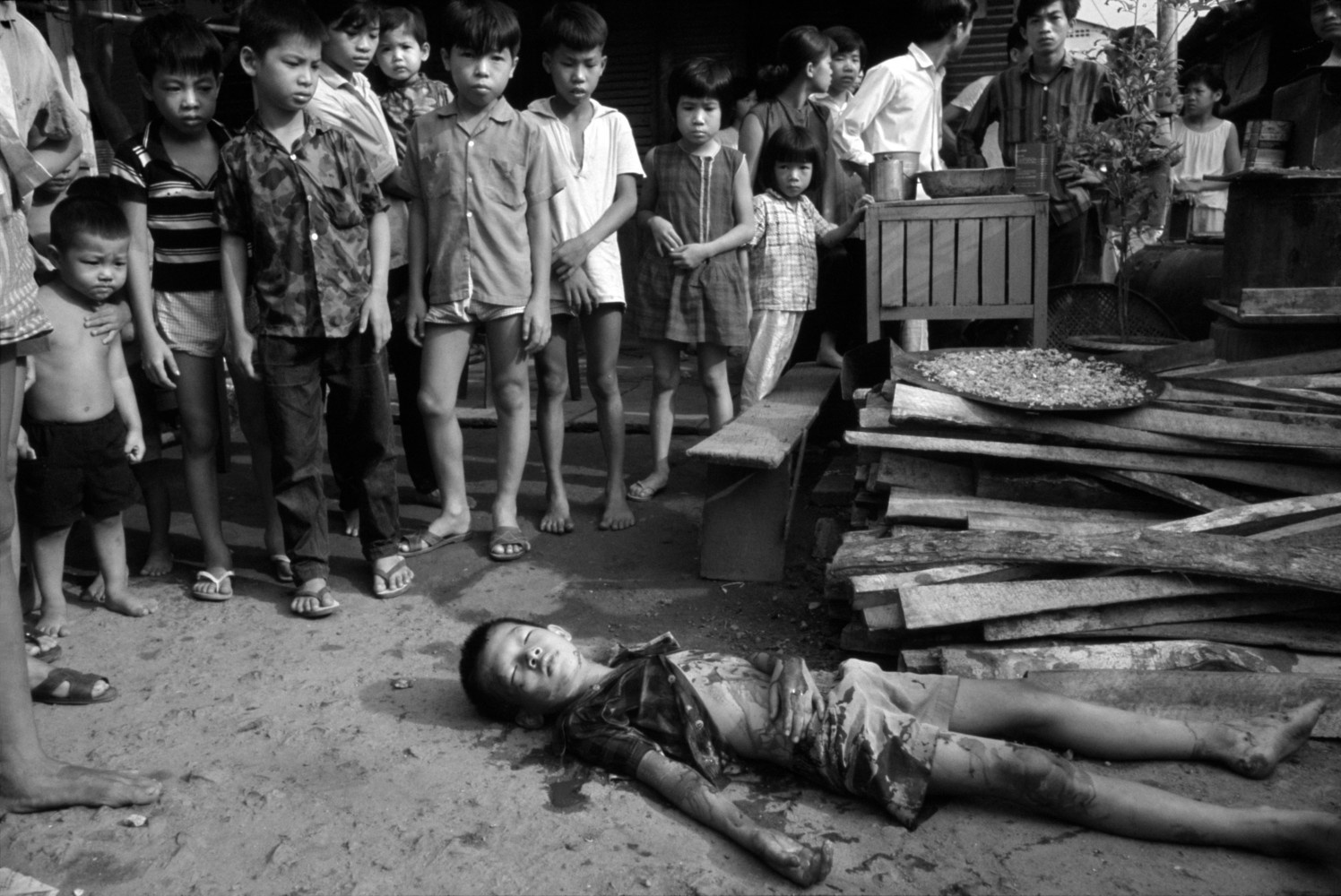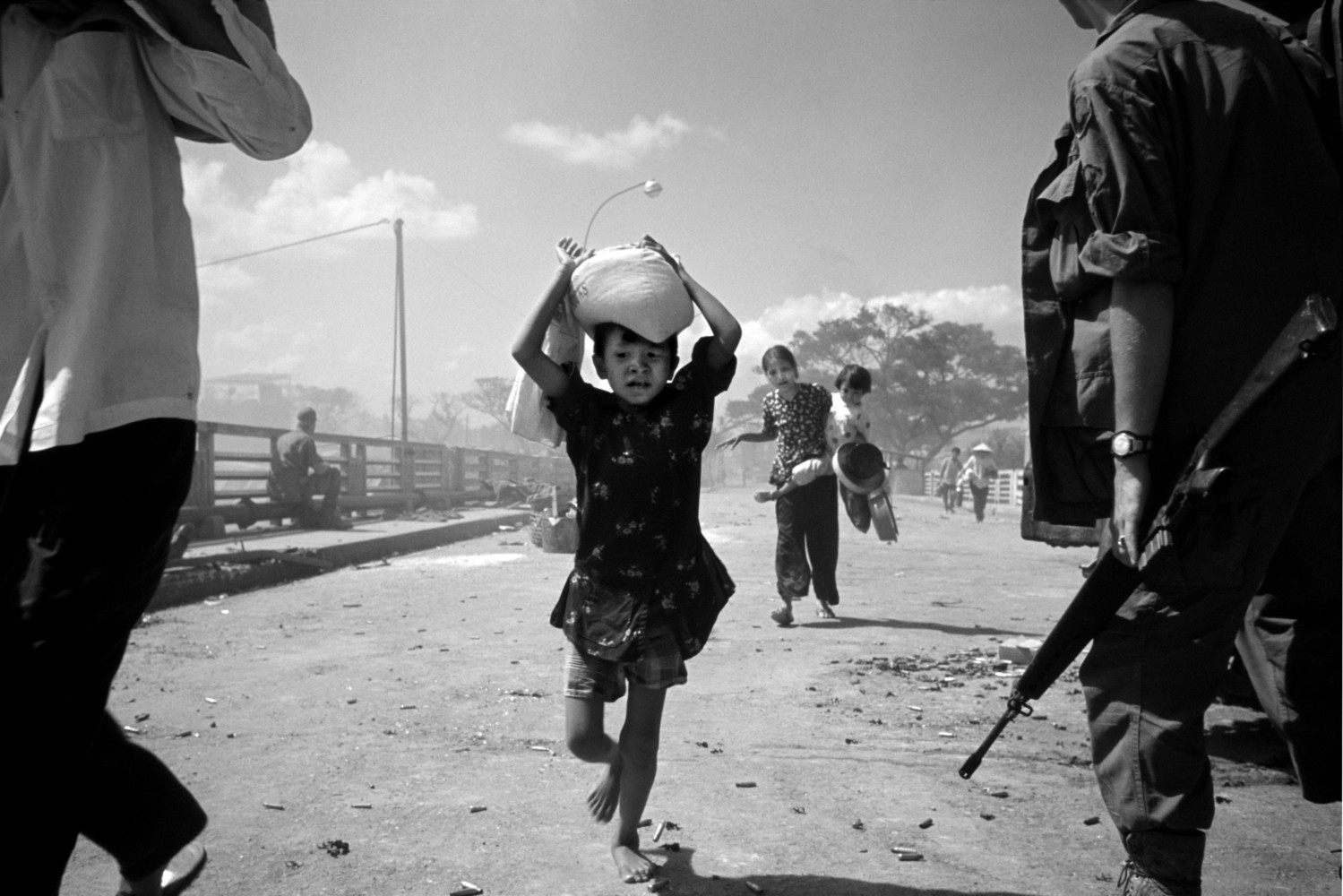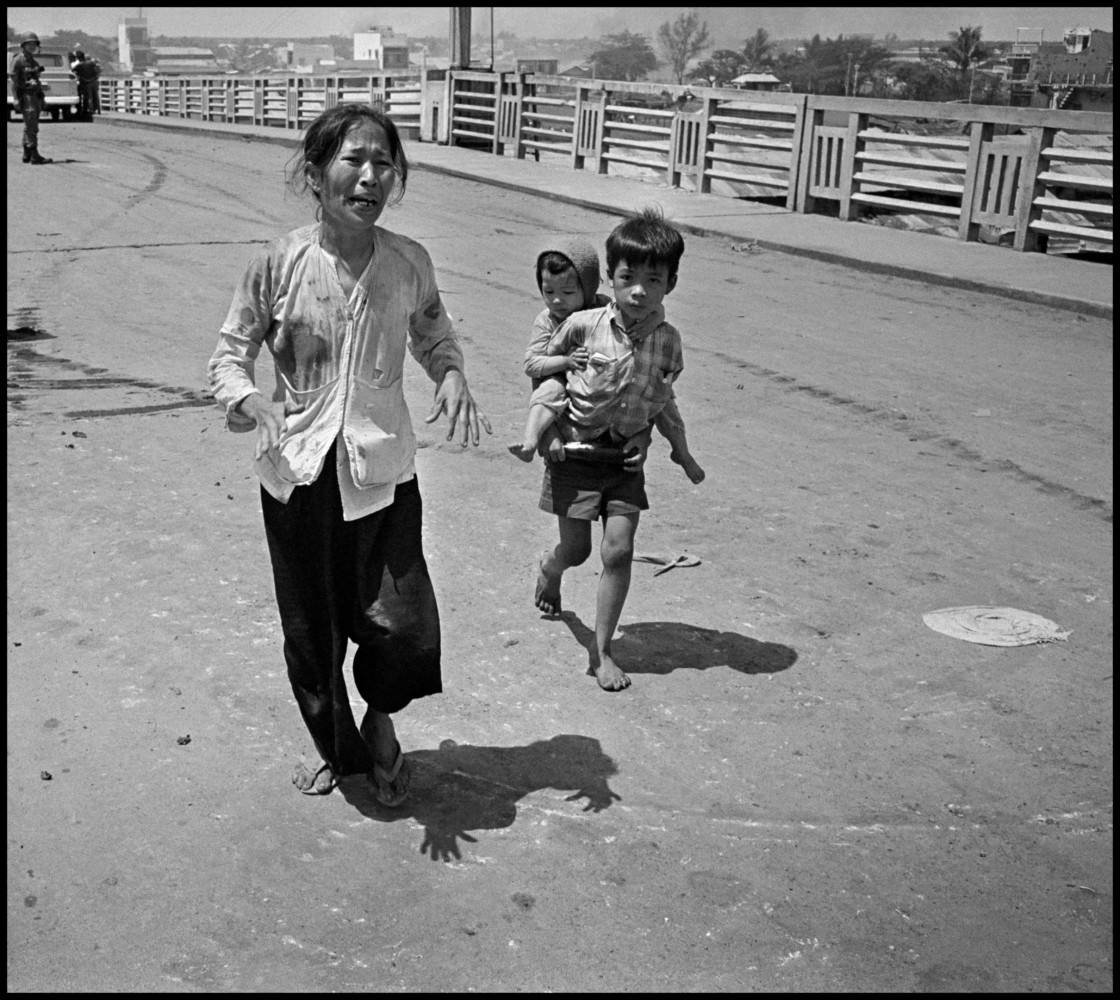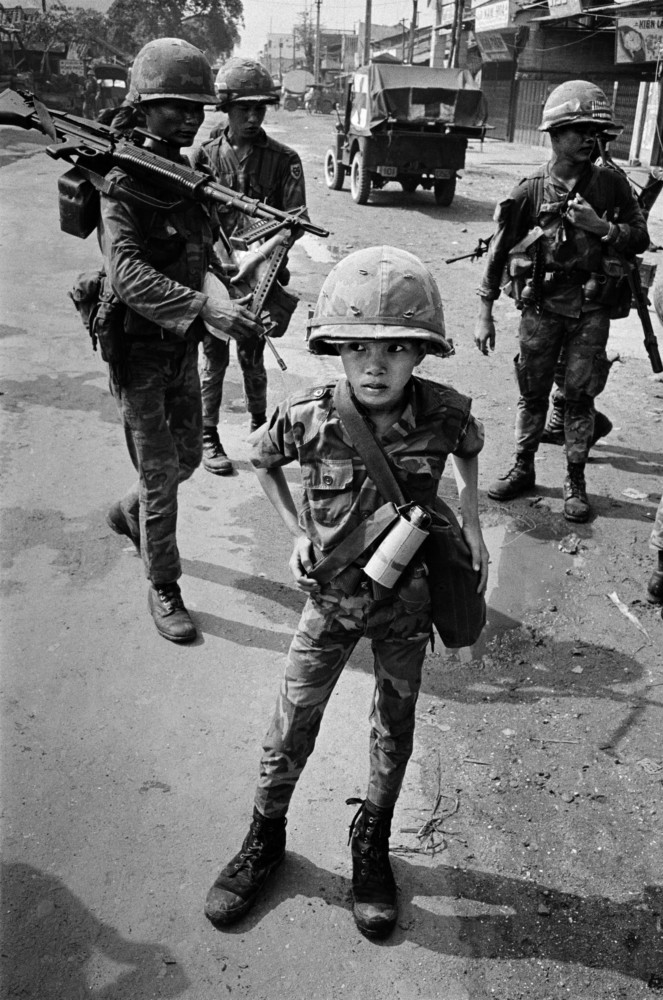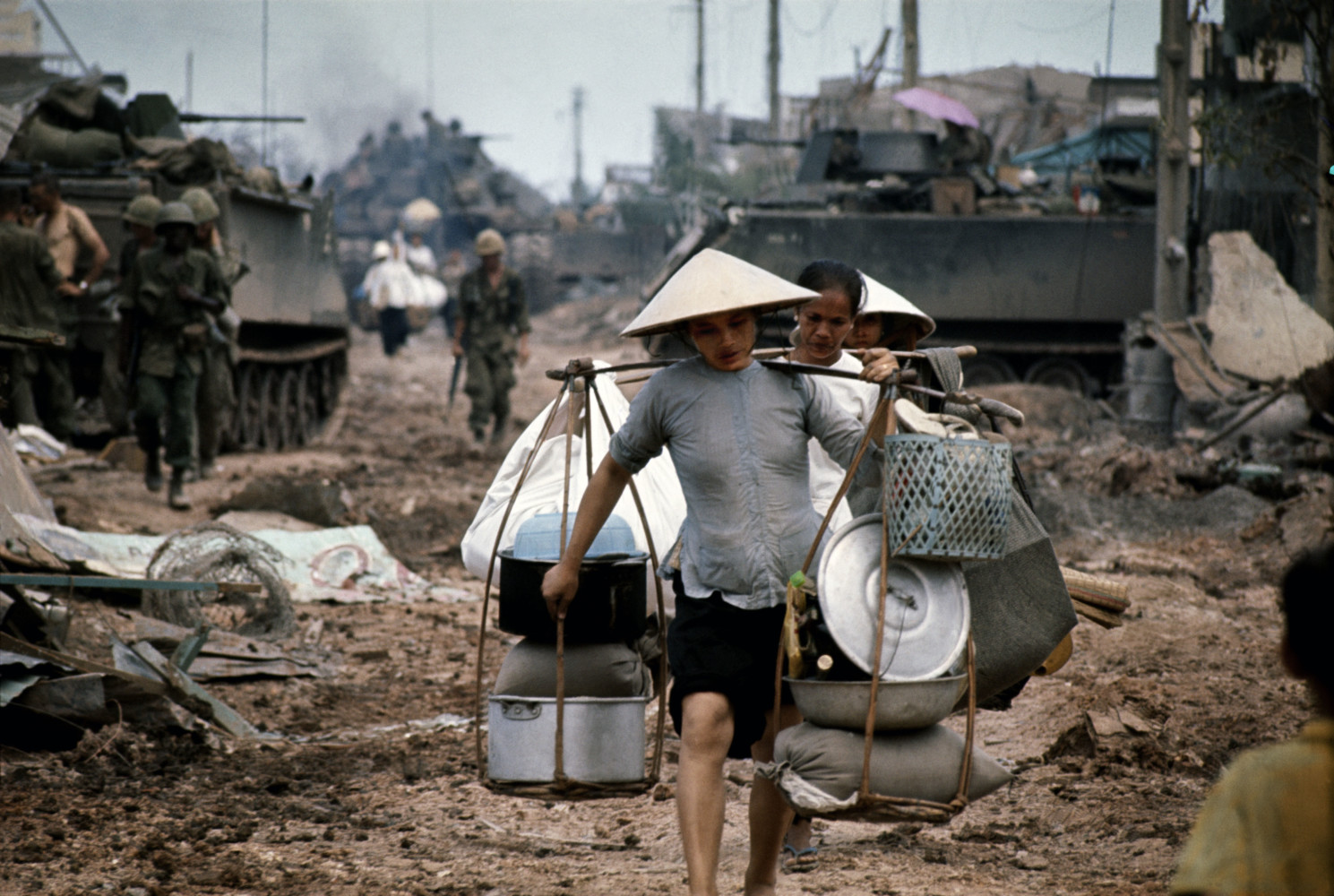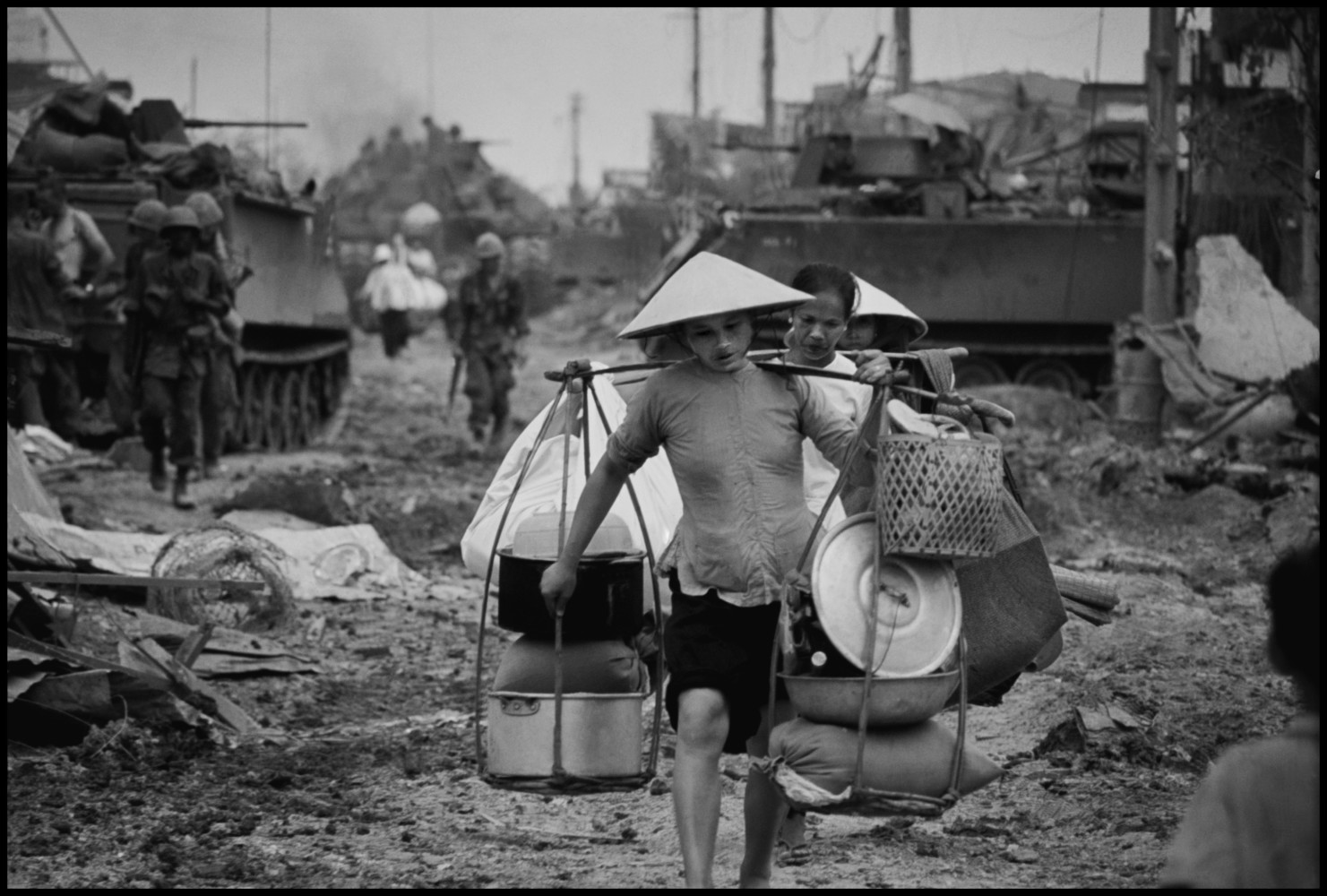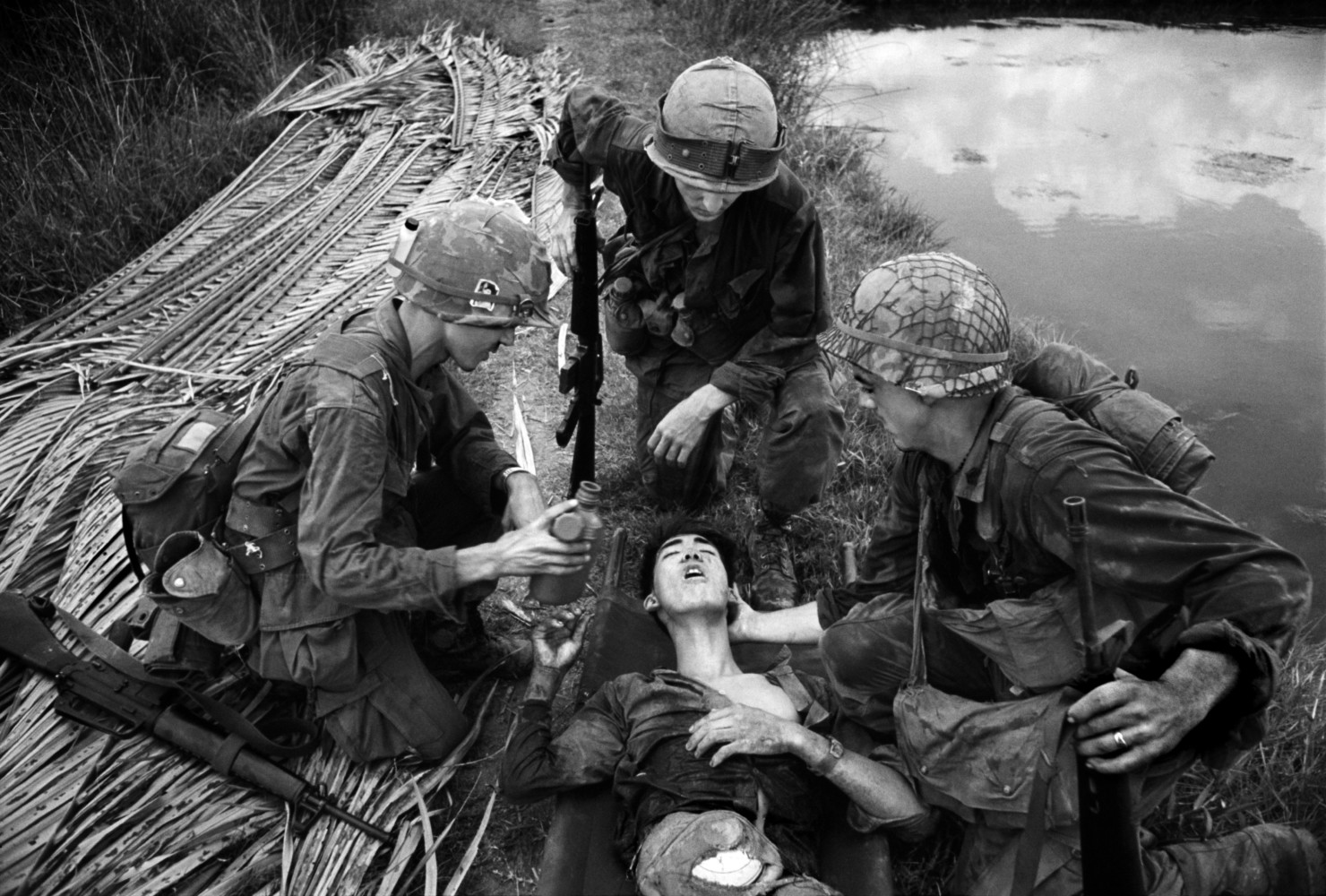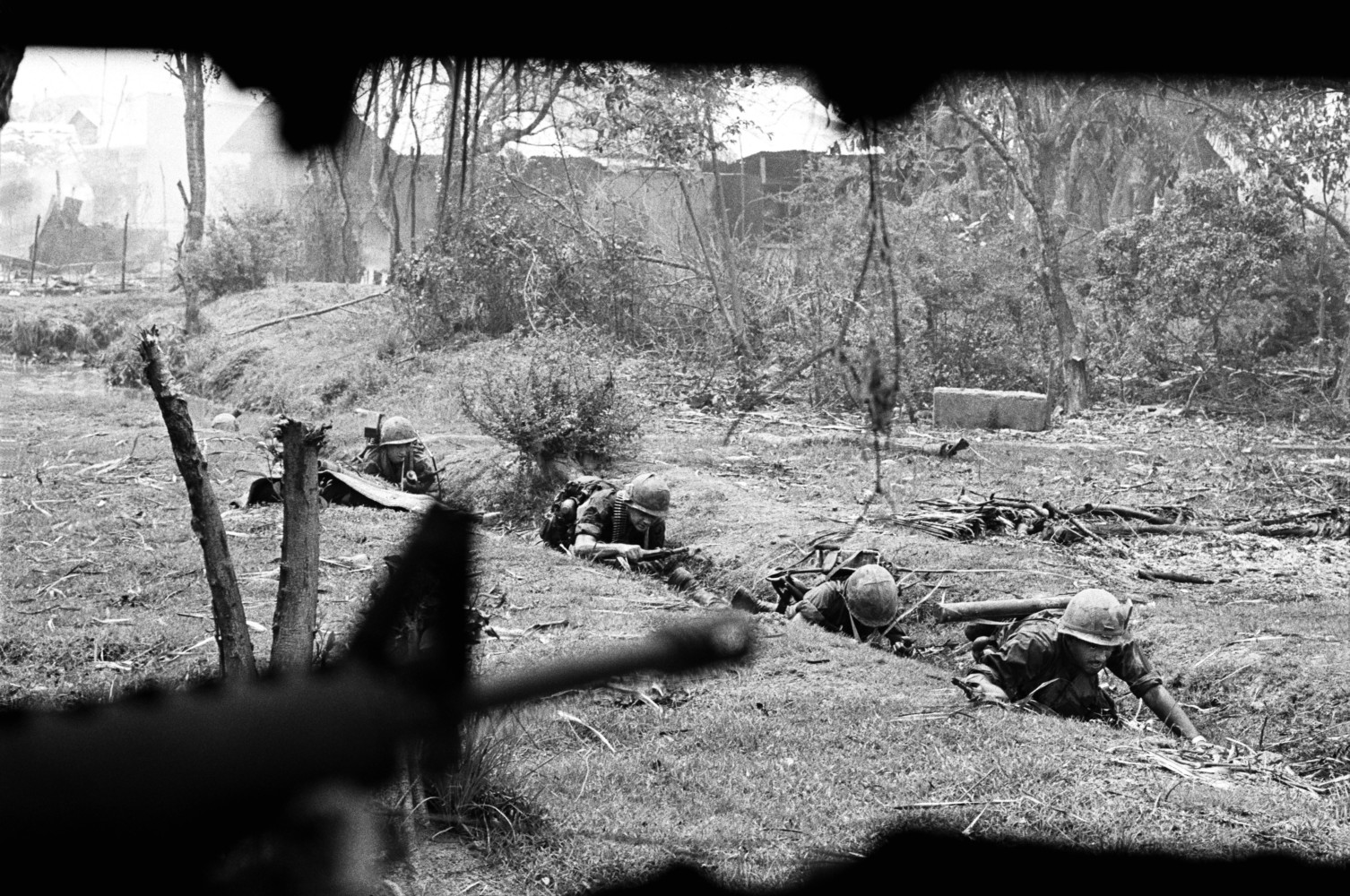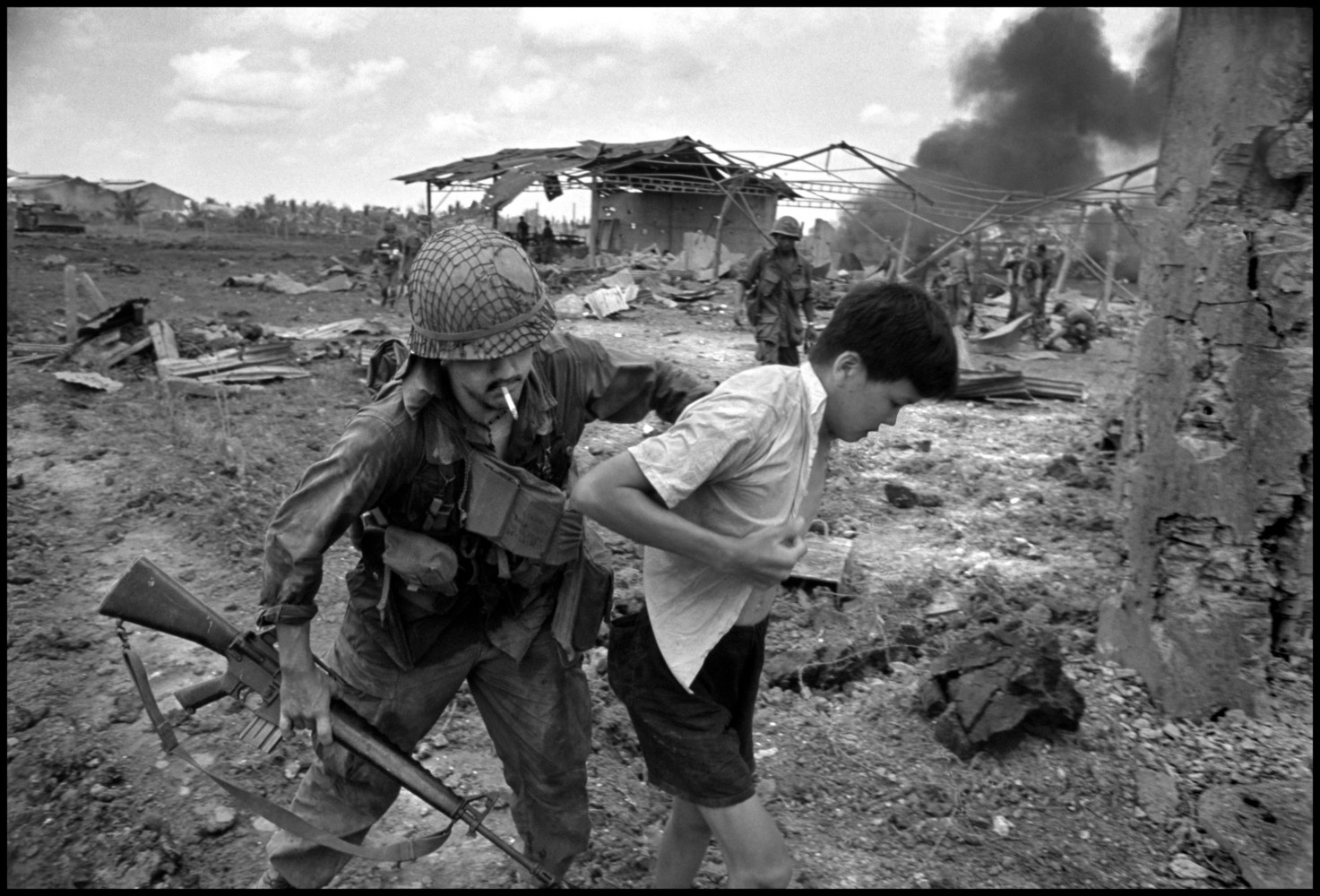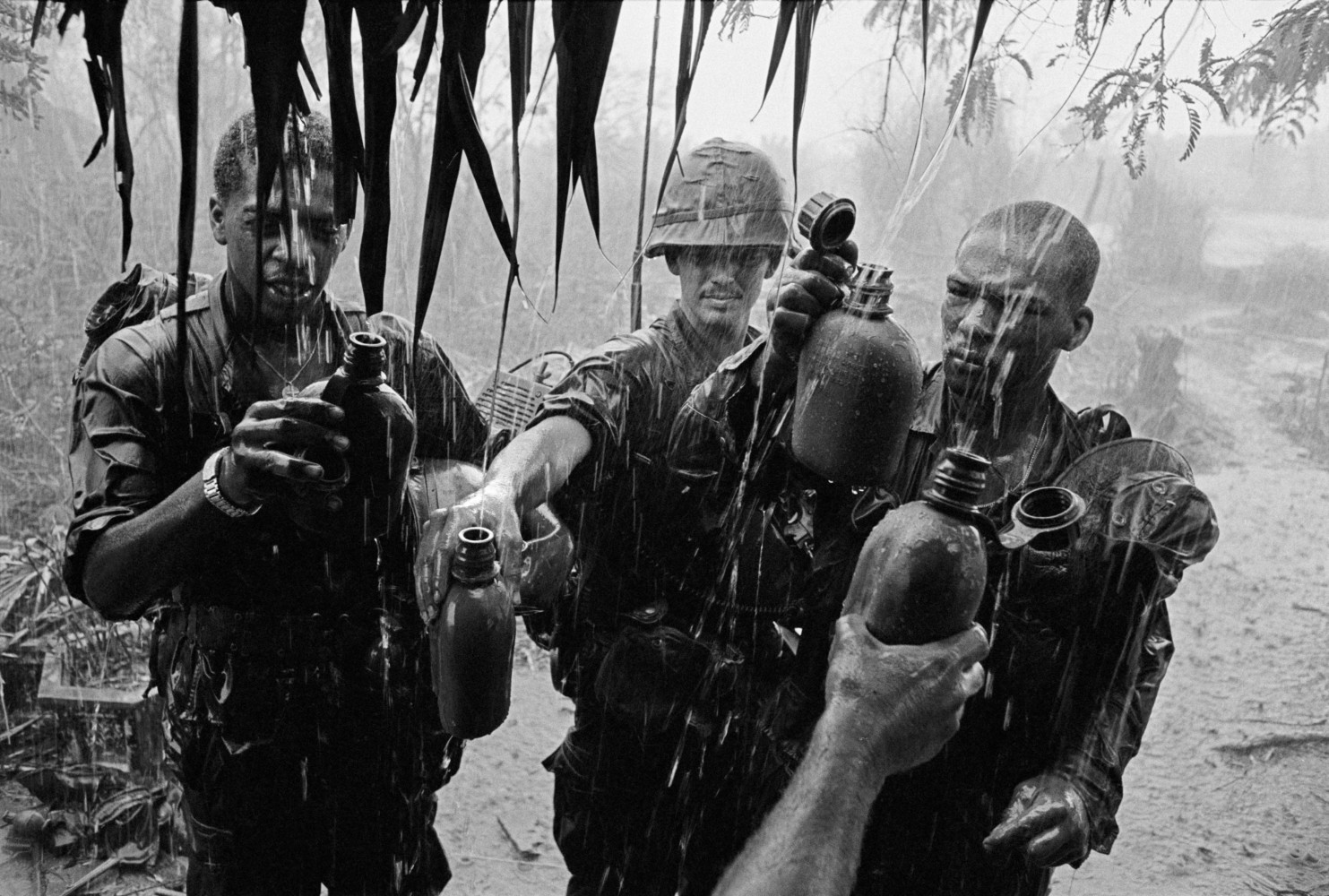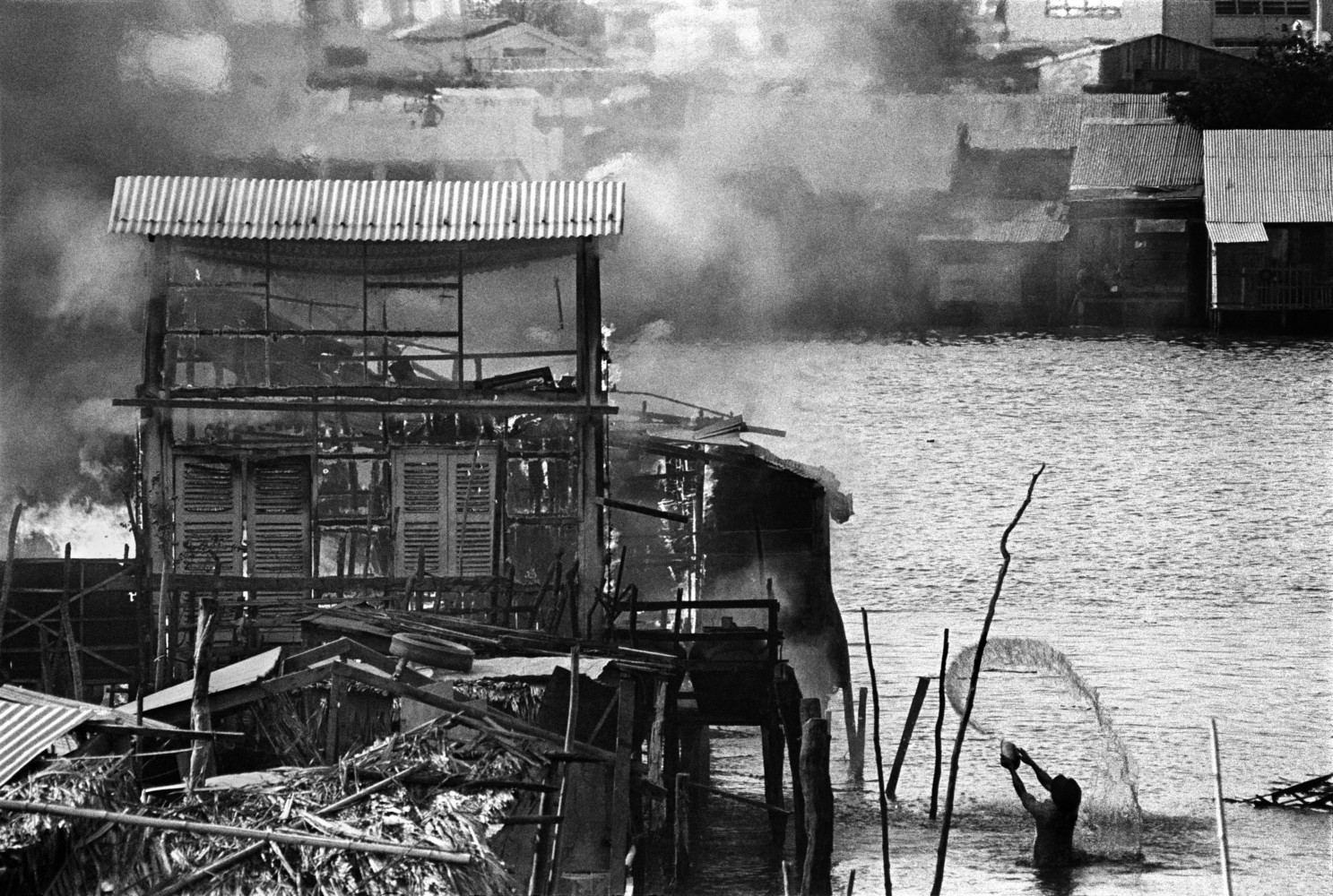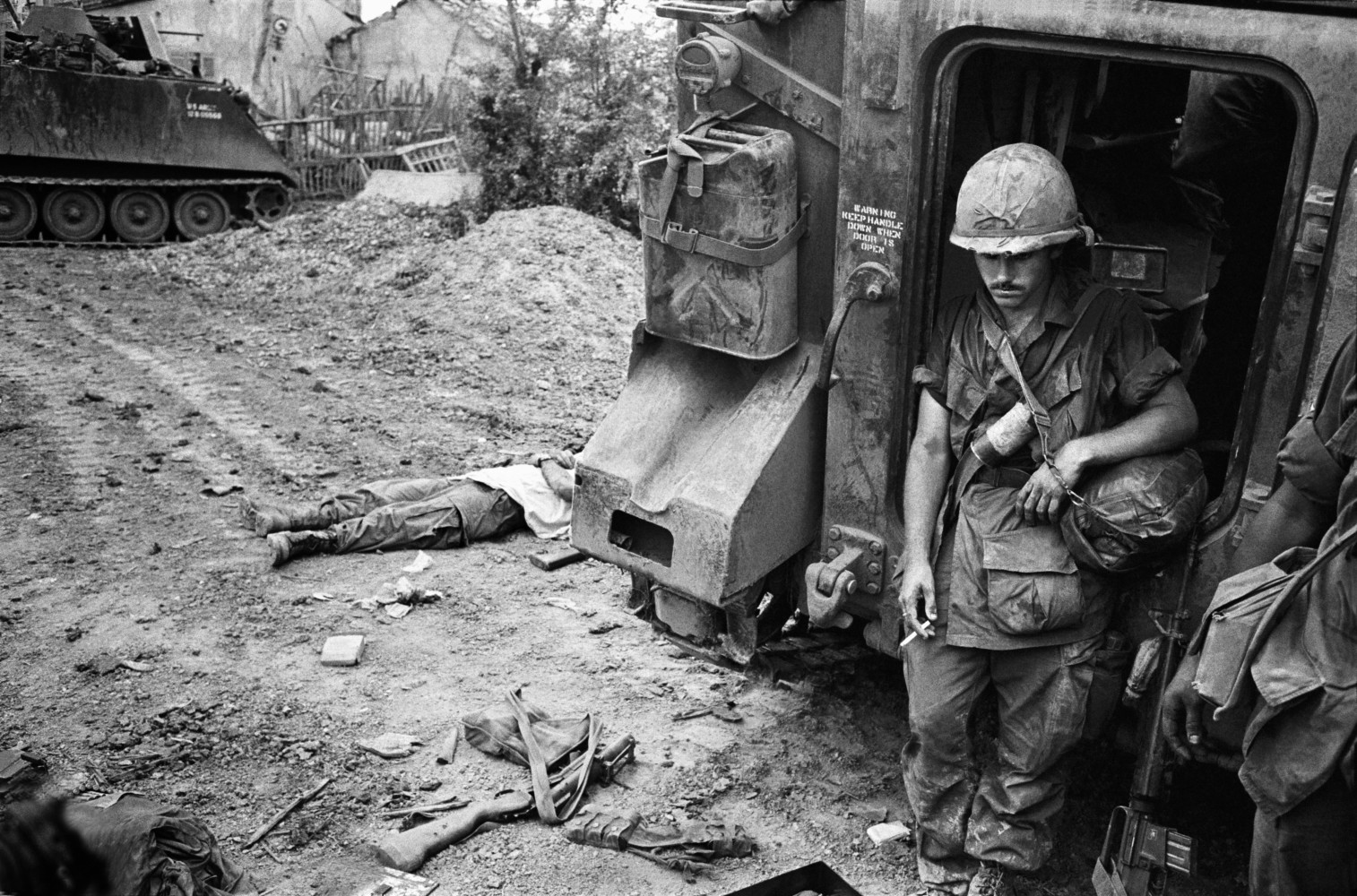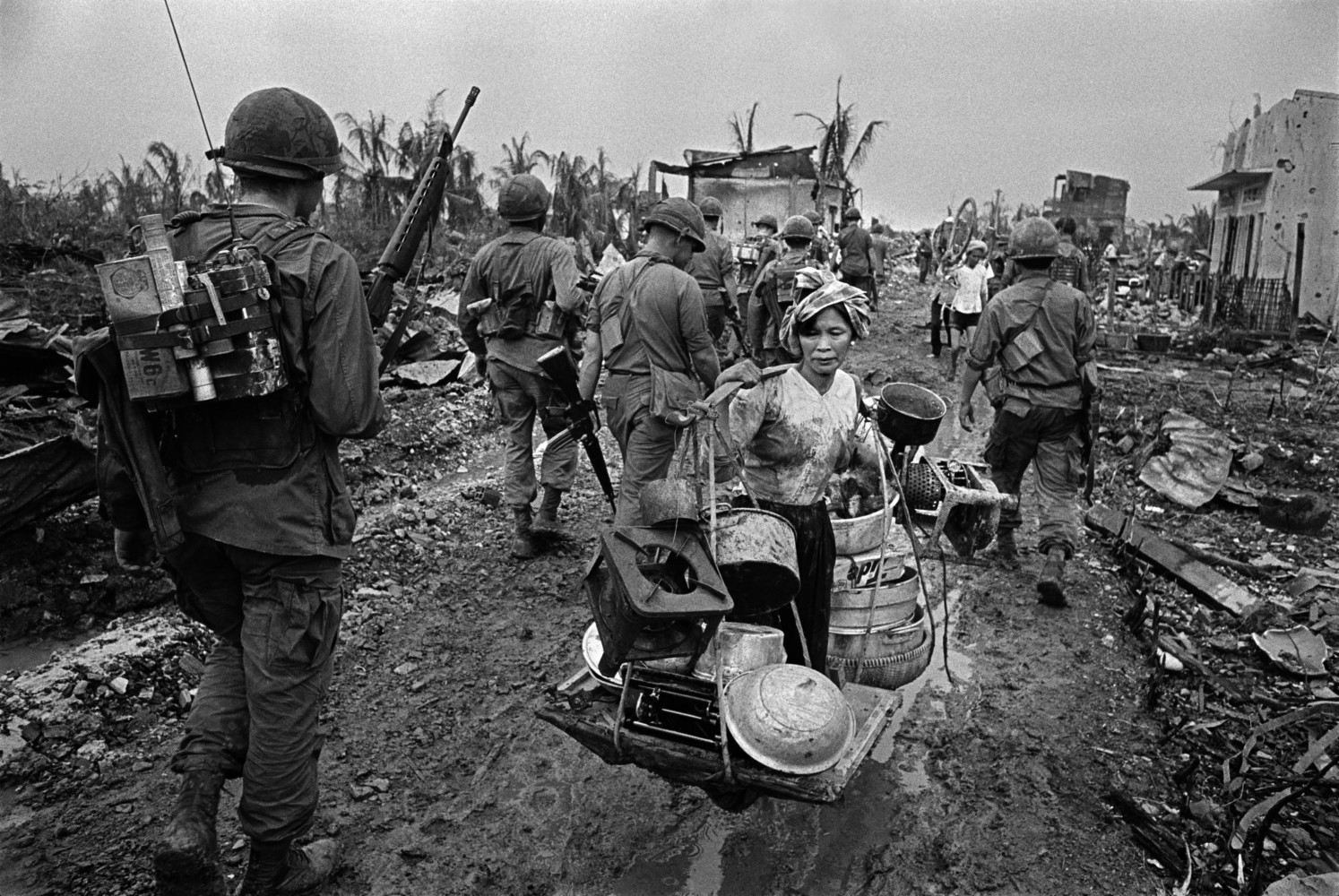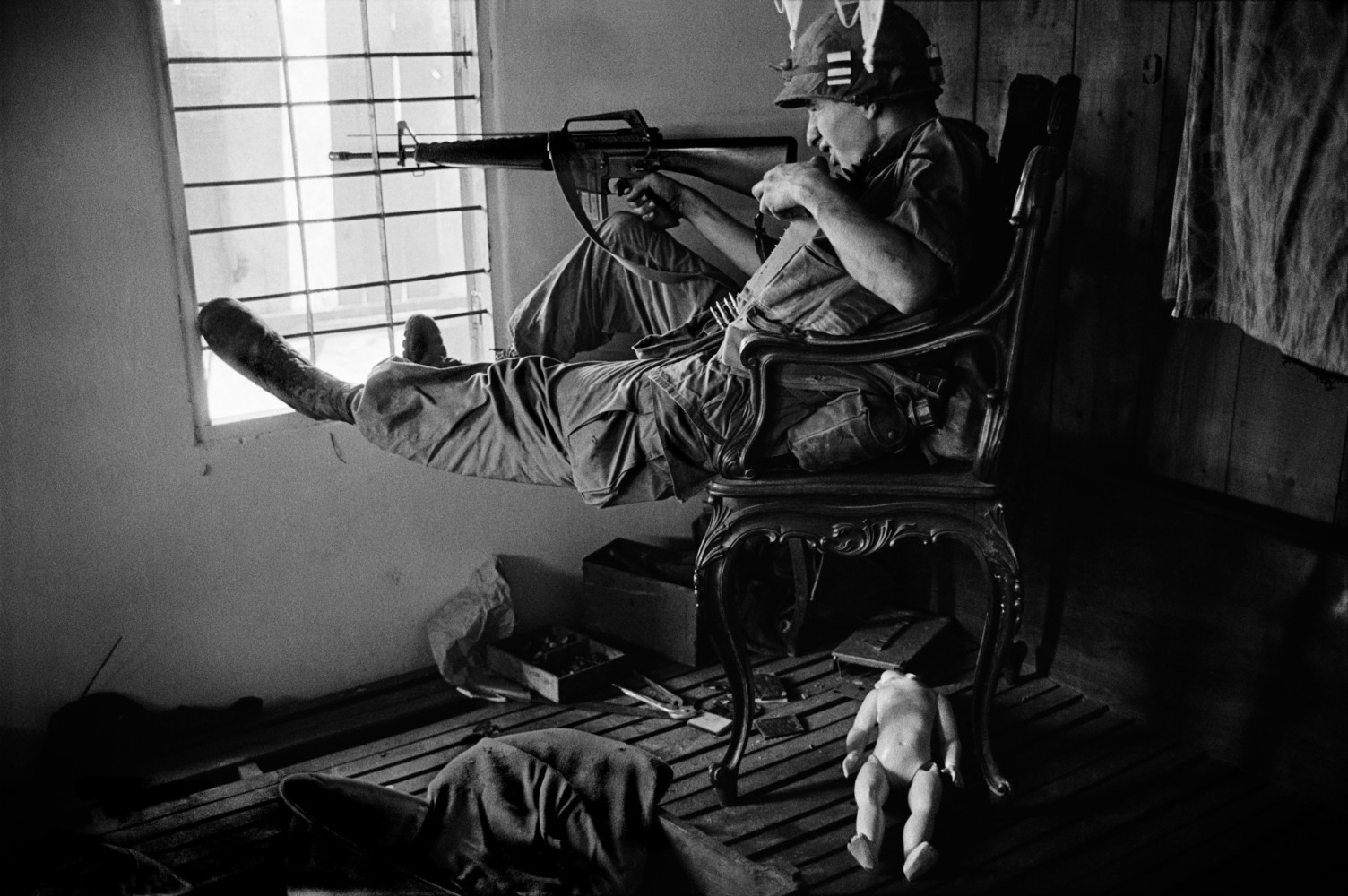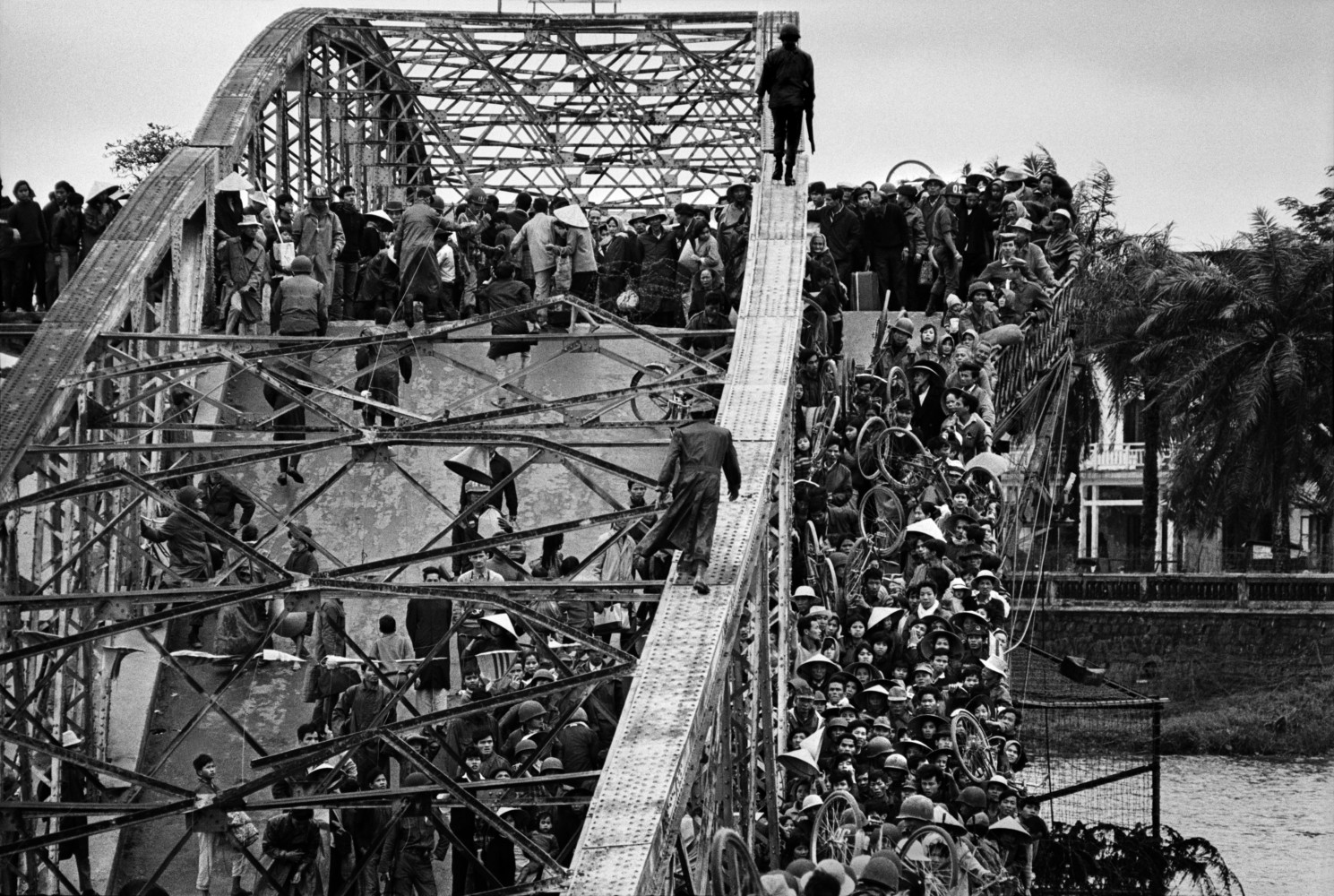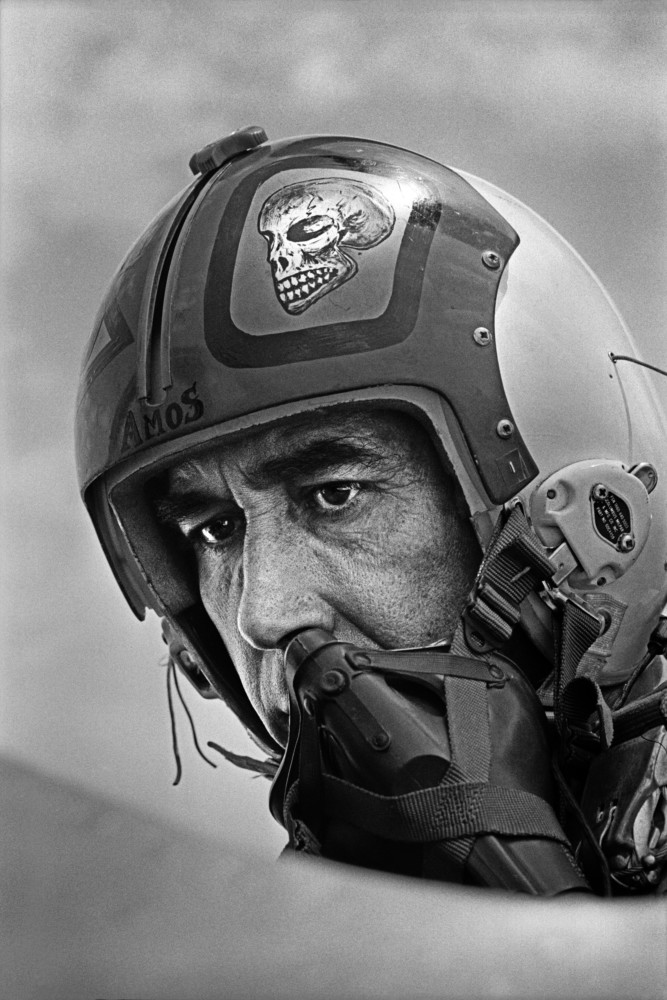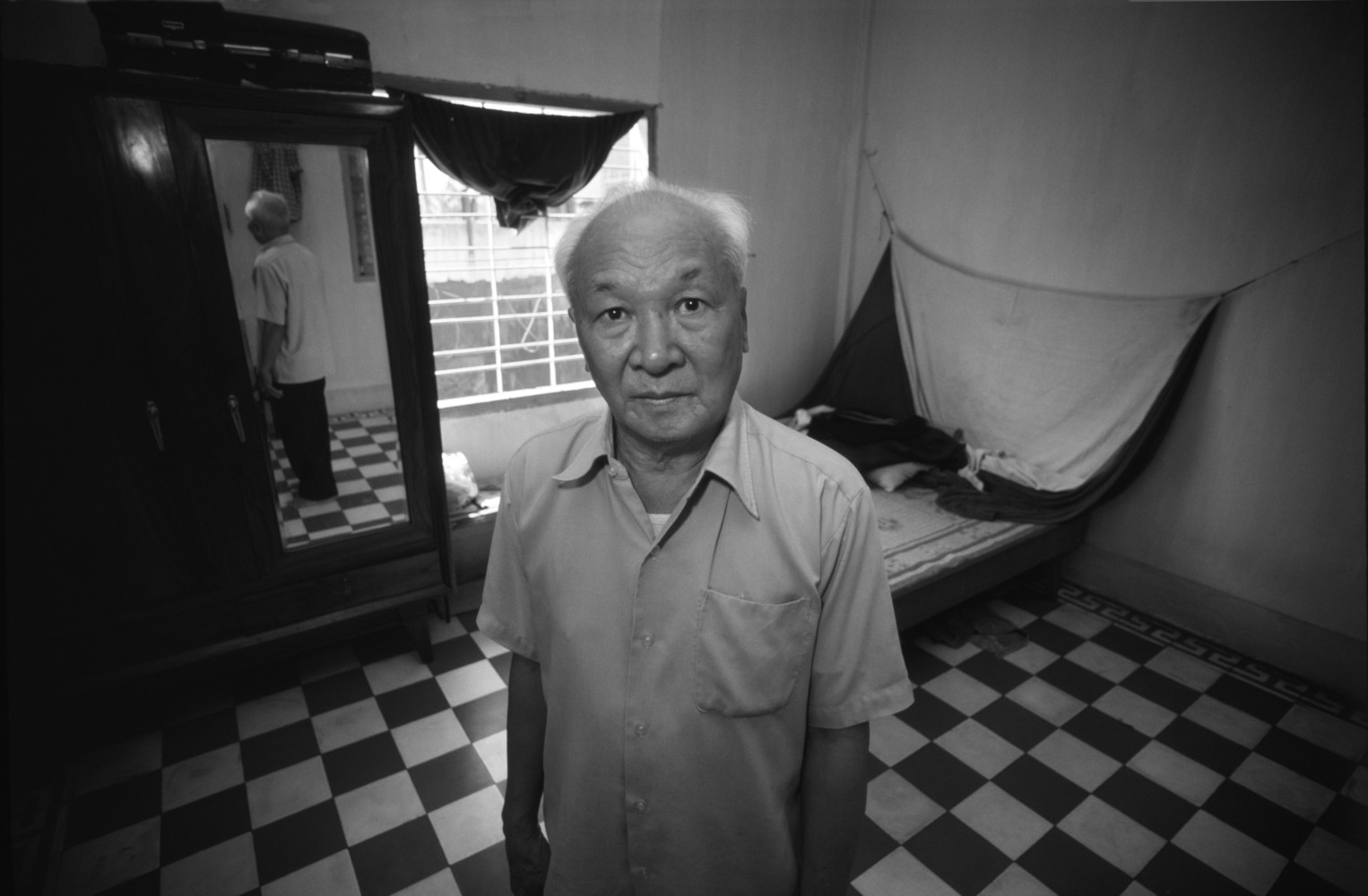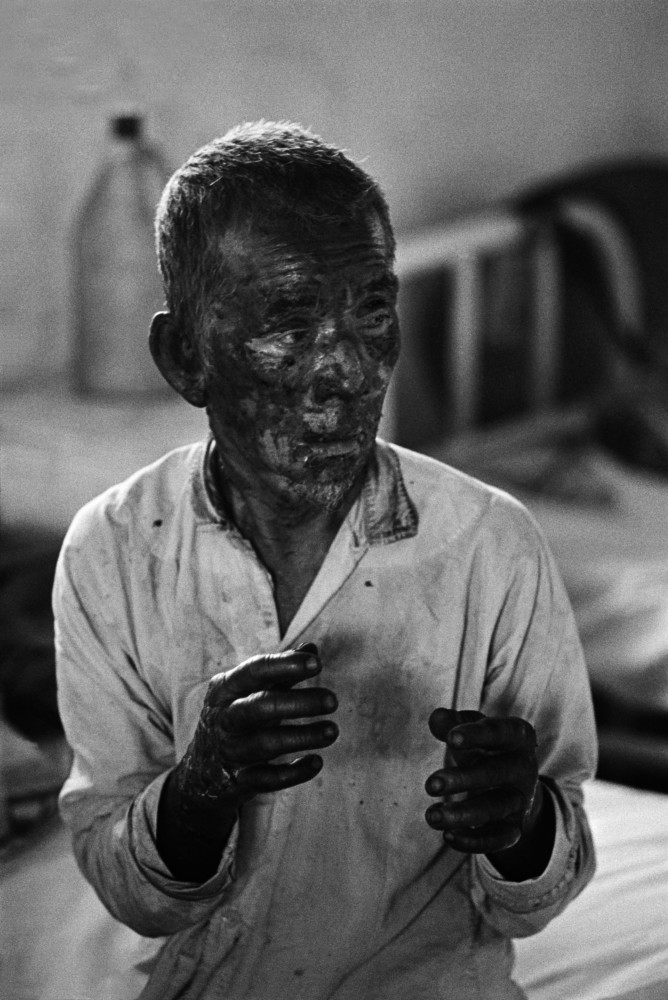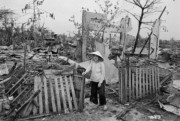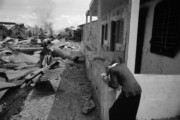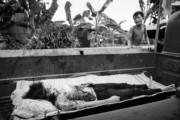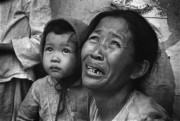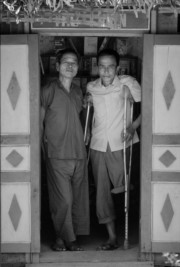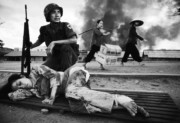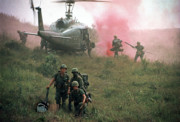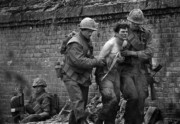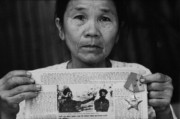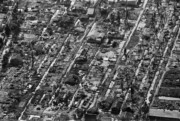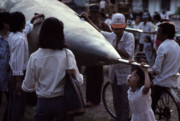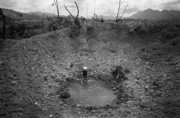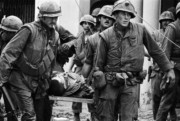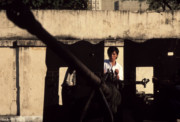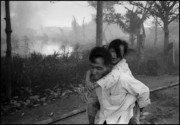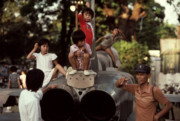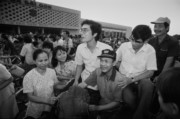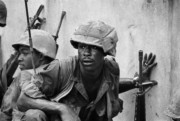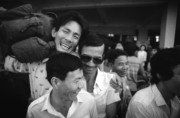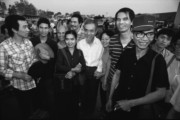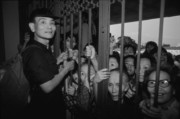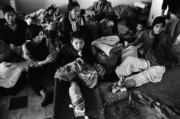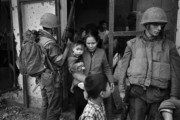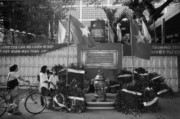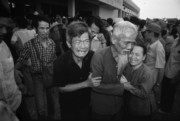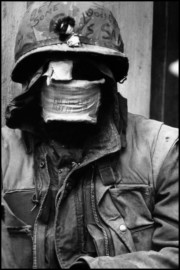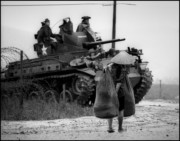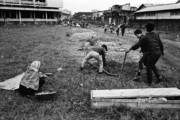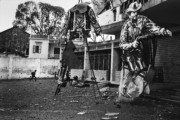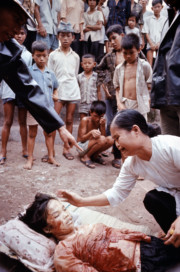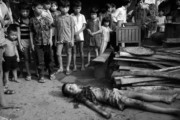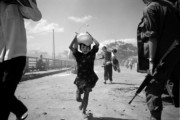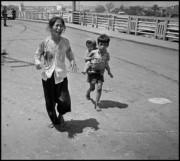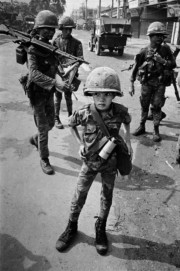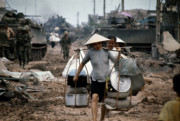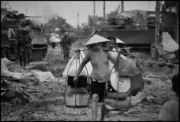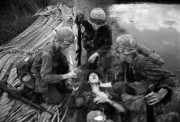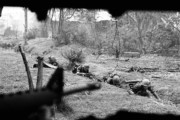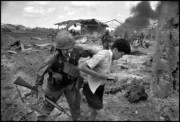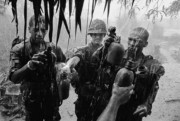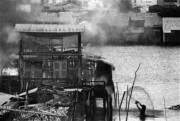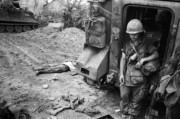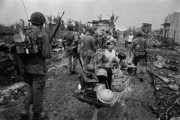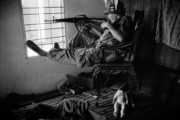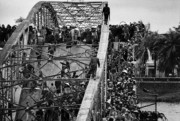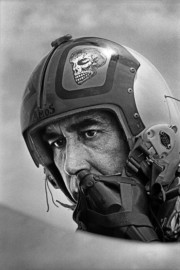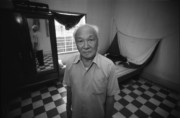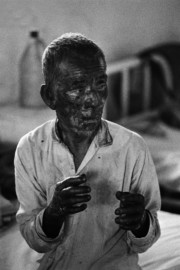Philip Jones Griffiths The Saigon fire department had the job of collecting the dead from the streets during the Tet offensive. They had just placed this young girl, killed by U.S. helicopter fire, in the back of their (...)
truck, where her distraught brother found her. When The New York Times published this photograph, it implied there was no proof that she was killed by American firepower. Vietnam. 1968. © Philip Jones Griffiths | Magnum Photos
Philip Jones Griffiths VIETNAM. Ex-Colonel Tran Van Phan was the acting Chief of Police for Sai Gon in 1968 after his boss, the infamous General Loan, was wounded during the Tet Offensive. On the right, Ex-Colonel Phan T (...)
ai Diet. They are standing in the doorway of the camp library. © Philip Jones Griffiths | Magnum Photos
Philip Jones Griffiths U.S. policy in Vietnam was based on the premise that peasants driven into the towns and cities by the carpet-bombing of the countryside would be safe. Furthermore, removed from their traditional v (...)
alue system they could be prepared for imposition of consumerism. This "restructuring" of society suffered a setback when, in 1968, death rained down on the urban enclaves. The battle for Saigon, Vietnam. 1968. © Philip Jones Griffiths | Magnum Photos
Philip Jones Griffiths VIETNAM. Mrs. Nguyen Thi Lop, 56, the widow of Nguyen Van Lem (nom-Daguerre, Bay Lop) murdered by General Nguyen Ngoc Loan during the Tet Offensive in Ho Chi Minh City. He was captured whilst atta (...)
cking the Naval Headquarters in the city. Loan died in the U.S. in 1998. The photographer sent flowers with a card that read, "I'm sorry. There are tears in my eyes." 1988. © Philip Jones Griffiths | Magnum Photos
Philip Jones Griffiths VIETNAM. This operation by the 1st Cavalry Division to cut the Ho Chi Minh trail failed like all the others but the U.S. military were shaken to find such sophisticate weapons stockpiled in the val (...)
ley. Officers still talked of winning the war, of seeing "the light at the end of the tunnel." As it happened there was a light, that of a fast-approaching express train. 1968 © Philip Jones Griffiths | Magnum Photos
Philip Jones Griffiths The battles for Saigon. At Tet and again in Mai, the vietcong struck Saigon. They aimed for the middle-class districts which were duly destroyed by United States firepower. Looting was extensive, (...)
so people fled with everything they could carry. © Philip Jones Griffiths | Magnum Photos
Philip Jones Griffiths VIETNAM. During the Vietnamese New Year celebrations of the Tet, the city of Hue an ancient Mandarin walled city which stood on the banks of the perfumed river and near to the demilitarised zone, a (...)
force of 5000 Vietcong and NVA (North Vietnamese Army) regulars took siege of the citadel. The American sent in the Fifth Marine Commando force to dislodge them. 1968 © Philip Jones Griffiths | Magnum Photos
Philip Jones Griffiths US. Marines. South Marines. Jan/Feb. 1968. During the Vietnamese New Year celebrations of the TET, the city of HUE, an ancient Mandarin walled city which stood on the banks of the perfumed river an (...)
d near to the demilitarized zone, a force of 5000 VIETCONG and NVA (North Vietnamese Army) regulars took siege of the citadel. The Americans sent in the Fifth Marine Regiment to dislodge them. © Philip Jones Griffiths | Magnum Photos
Philip Jones Griffiths VIETNAM. This boy was killed by U.S. helicopter gunfire while on his way to church - a Catholic church - whose members were avid supporters of the government, who were in turn pro-American. The re (...)
sult was a disillusioned urban population, reluctant to believe in or support their discredited leaders. 1968 © Philip Jones Griffiths | Magnum Photos
Philip Jones Griffiths VIETNAM. The battle for Saigon. American G.I's often showed compassion toward the Vietcong. This sprang from a soldierly admiration for their dedication and bravery; qualities difficult to discern (...)
in the average government soldier. This VC had fought for three days with his intestines in a cooking bowl strapped onto his stomach. 1968 © Philip Jones Griffiths | Magnum Photos
Philip Jones Griffiths VIETNAM. The battle for Saigon. Pity the poor fighting man in Vietnam. The problem was always too much water or too little. In the early days of the war, water was shipped from California, the indi (...)
genous sort considered unsafe. Later it was made "palatable" with huge quantities of chlorine. Wiser men know to fill up with the natural variety. 1968 © Philip Jones Griffiths | Magnum Photos
Philip Jones Griffiths VIETNAM. The battle for Saigon. The problem with "close" artilery support was that it was often too close. on this occasion shells called in by these troops had landed among them. The officer's des (...)
perate message to halt the bombardment were not recieved; he had taken up refuge inside an armoured personnel carrier where his frenzied transmissions could not penetrate the metal hull. 1968 © Philip Jones Griffiths | Magnum Photos
Philip Jones Griffiths VIETNAM. Hue. Refugees flee across a damaged bridge. Marines intended to carry their counterattack from the southern side, right into the citadel of the city. Despite many guards, the Vietcong were (...)
able to swim underwater and blow up the bridge, using skin-diving equipment from the Marines. © Philip Jones Griffiths | Magnum Photos
Philip Jones Griffiths VIETNAM. Mr. Ngo Toai, the owner of the Pho Binh soup shop in the upstairs room where he sheltered and fed 100 National Liberation Front fighters from the F100 commando group before they attacked t (...)
he US Embassy during Tet in 1968. © Philip Jones Griffiths | Magnum Photos
